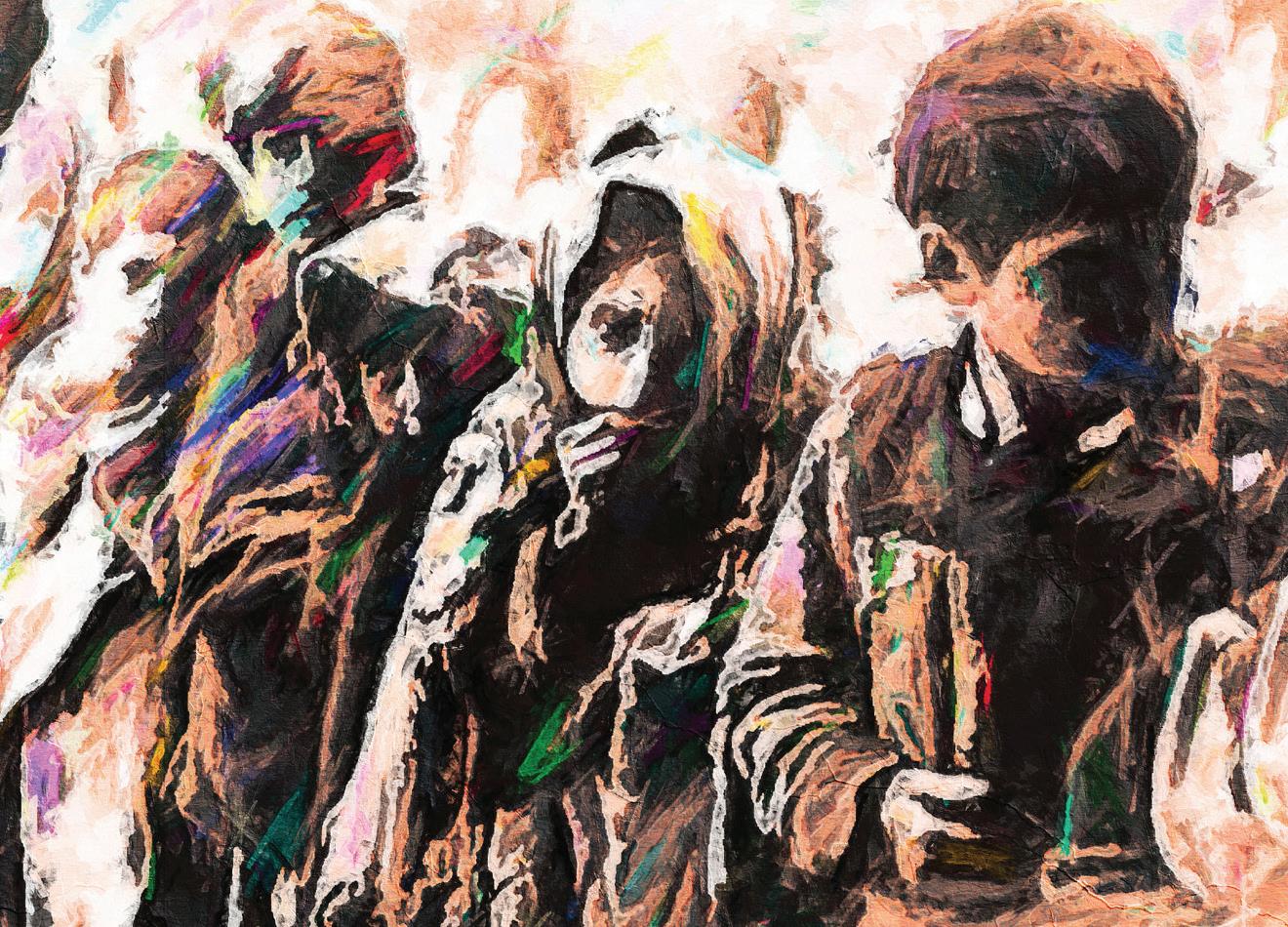




IN THE 20 TH AND 21 ST CENTURIES
GENOCIDE
destruction
ethnic group
Generally speaking, genocide does not necessarily mean the immediate destruction
when accomplished by mass killings of all members of a nation. It is intended rather to signify a coordinated plan of different actions aiming at the destruction of essential foundations of the life of national groups, with the aim of annihilating the groups themselves. Genocide is directed against the national group as an entity, and the actions involved are directed against individuals, not in their individual capacity, but as members of the national group.”
– Raphael Lemkin
Genocide – a destructive force
Freedom. Liberty. Independence. Life. Happiness. These words are integral to the life we are used to in the United States, but throughout history and the world, genocide has been an evil, destructive force that destroys these ideals.
Risk factors
The study of the Holocaust and other genocides raises questions about how the world can recognize and respond to warnings that a country is at risk for genocide or mass atrocities. While each genocide is unique, in most places where genocide occurs, there are common risk factors and warning signs. By acknowledging these factors and warning signs, we hope the phrases “Never again” and “Not on my watch” can become a reality.
Genocides have continued to happen before and since the Holocaust, which we will explore on the pages of this publication through facts and survivor stories. It is important to remember that every genocide and every survivor’s story is unique, even though most have things in common. It also is important to remember that the Holocaust and other genocides were not inevitable. Genocide occurred in Rwanda in 1994, in Bosnia in 1995 and Darfur in 2001. Just as there were key conditions that made the Holocaust possible, there are identifiable risk factors for genocide today.
Some of the most common are:
• Large-scale instability in a country.
• Ideology – Genocide often happens when leaders believe that some people in the country are inferior or dangerous because of their race, religion, or national or ethnic origin.
• Discrimination and violence against specific groups of people.
Source: United States Holocaust Memorial Museum
On April 24, 2021, demonstrators in Yerevan, Armenia, march in a torchlight procession to mark the 106th anniversary of the massacre and to honor the victims of the Armenian Genocide. Credit: Associated Press

Warning signs
• Dangerous speech – Before and during genocide, there is often widespread hate speech. Such hate speech promotes the idea that members of a certain group are evil and dangerous.
• Armed groups – Before committing genocide, leaders often create special groups that share their ideology and goals. These groups can be used to commit violent acts against certain groups of people.
• Armed conflict – Genocide most often happens during armed conflict, such as civil or international conflicts.
Source: United States Holocaust Memorial Museum
TIMELINE OF KEY EVENTS – crimes against humanity
An estimated 20,000 Adana Armenians were killed during the Ottoman Massacre.
As many as 1.2 million Armenian Christians living in the Ottoman Empire were killed during the Armenian Genocide.
Think about it
Keeping a journal is a great way to learn more about what you are studying, the world around you and yourself. How do conflict and war affect you and your family? Why do you do what you do? Do the actions of people in foreign countries affect you? Do you have strong convictions? Are you able to stand up to others when your ideas are questioned? In your journal, record your general thoughts as well as your thoughts about the information you read in this publication.
orphans being deported from Turkey. Ca. 1920. Credit: Shutterstock
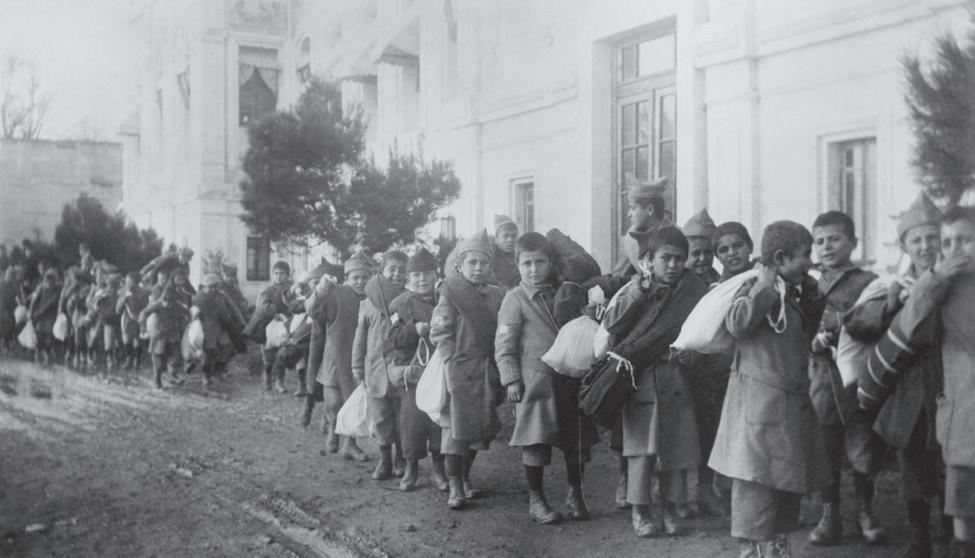
2 tampabay.com/nie
“By ‘genocide’ we mean the
of a nation or of an
…
of a nation, except
1909
1915-1916
Armenian
Genocide: An international crime
Genocide is an internationally recognized crime where acts are committed with the intent to destroy, in whole or in part, a national, ethnic, racial or religious group. These acts fall into five categories:

1. Killing members of the group.
2. Causing serious bodily or mental harm to members of the group.
3. Deliberately inflicting on the group conditions of life calculated to bring about its physical destruction in whole or in part.
4. Imposing measures intended to prevent births within the group.
5. Forcibly transferring children of the group to another group.
There are other serious, violent crimes that do not fall under the specific definition of genocide. They include crimes against humanity, war crimes, ethnic cleansing and mass killing. The timeline in this publication focuses on genocides as well as crimes against humanity.
Crimes against humanity
The Rome Statute of the International Criminal Court defines crimes against humanity as “any of the following acts when committed as part of a widespread or systematic attack directed against any civilian population. The acts include murder, extermination, enslavement, deportation, imprisonment, torture, rape (and other gender-based or sex crimes), group-based persecution, enforced disappearance, apartheid and ‘other inhumane acts of a similar character intentionally causing great suffering or serious injury to body or to mental or physical health.’”
Source: 1998 Article 7, Rome Statute of the International Criminal Court
Do the research
Some history: Raphael Lemkin
Raphael Lemkin, a Polish Jew, was born in 1900 on a small farm near the Polish town of Wolkowysk. Lemkin was a lawyer and writer. Lemkin's writings indicate an early exposure to the history of Ottoman attacks against Armenians and Jews. He believed legal protection for these groups was imperative. “As early as 1933, he was working to introduce legal safeguards for ethnic, religious and social groups at international forums, but without success,” according to the United States Holocaust Memorial Museum.
When the German army invaded Poland, Lemkin escaped to the United States, where he began teaching at Duke University. In the summer of 1942, he moved to Washington, D.C., to join the War Department as an analyst. He documented Nazi atrocities in his 1944 book, Axis Rule in Occupied Europe. It was in this text that he introduced the word “genocide.”
Lemkin was frustrated that people did not have sufficient language to represent horrible crimes against humanity and civilization. British Prime Minister Winston Churchill referred to Nazi atrocities as a "crime without a name." Therefore, Lemkin took it upon himself to invent the new word, “genocide,” to represent acts committed with the intent to destroy a group of people.
Sources: United States Holocaust Memorial Museum; Facing History and Ourselves
The following terms are key when discussing genocide. Research them on the Internet.
• Ethnic cleansing
• Mass atrocities
• Mass killing
• War crimes
Going beyond the text Ten stages of genocide
League of Nations founded.

A series of massacres and ethnic cleansing of Turkish Muslims by the Greek Army was known as the The Yalova Peninsula massacres.
Genocide never just happens. There is always a set of circumstances that occur to build the environment in which genocide can take place. According to the Holocaust Memorial Day Trust, Gregory H. Stanton, President of Genocide Watch, developed the 10 stages of genocide, which explain the different stages, that lead to genocide. At each of the earlier stages, there is an opportunity for members of the community or the International community to stop genocide before it happens. Go to hmd.org.uk/learn-about-theholocaust-and-genocides/what-is-genocide/the-ten-stagesof-genocide to read about the 10 stages. Then watch the short video. Look for examples of these 10 stages throughout the pages of this publication. Make a list of examples from each genocide that correspond with each stage. Next, look for current examples of one or more of the stages. Use the Tampa Bay Times to look for news stories that exemplify potential genocide issues. Share what you have learned with your classmates.
tampabay.com/nie 3
Source: United States Holocaust Memorial Museum
1919
1920-1921
“... the Armenian massacre was the greatest crime of the war, and the failure to act against Turkey is to condone it ... the failure to deal radically with the Turkish horror means that all talk of guaranteeing the future peace of the world is mischievous nonsense.”
– Theodore Roosevelt
Medz Yeghern: The Great Crime
Although the term “genocide” was not invented until 1944, what took place in Armenia 30 years earlier is often considered the first official genocide of a group.
Between spring 1915 and autumn 1916, the Ottoman Empire arrested, deported, conducted mass killings and created conditions intended to cause widespread death among the country’s Armenian Christian citizens. Most of these citizens were living in what would become Turkey. Known as the first genocide of the 20th Century, the Armenian genocide included widespread massacres, individual killings, mass deportations and systematic starvation.
Before the genocide, there were approximately 1.5 million Armenians living in the Ottoman Empire.
Between 664,000 and 1.2 million Armenian men, women, and children died in the genocide.
Sources: Armenian National Institute; United States Holocaust Memorial Museum
Persecution and annihilation
In April 1915, the Ottoman government began the systematic annihilation of its civilian Armenian population. The persecutions continued until 1923 when the Ottoman Empire ceased to exist and was replaced by the Republic of Turkey.
Ottoman authorities, supported by secondary troops and civilians, committed most of the murders of 1915-16. The government, controlled by the Committee of Union and Progress (also called the Young Turks), wanted to eliminate all Armenians to solidify Turkish Muslim dominance in eastern Anatolia, a western Asian peninsula, comprising most of the modern Republic of Turkey.
The Ottomans killed large numbers of people in mass shootings, while many others died of starvation during mass deportations.
Flowers adorn a marker during a ceremony held April 25, 2021, in Pinellas Park. Parishioners from St. Hagop held the ceremony to remember those killed during the Armenian Genocide. The day before, President Biden had acknowledged that Armenians were systemically killed during World War I in the Ottoman Empire. Credit: Tampa Bay Times
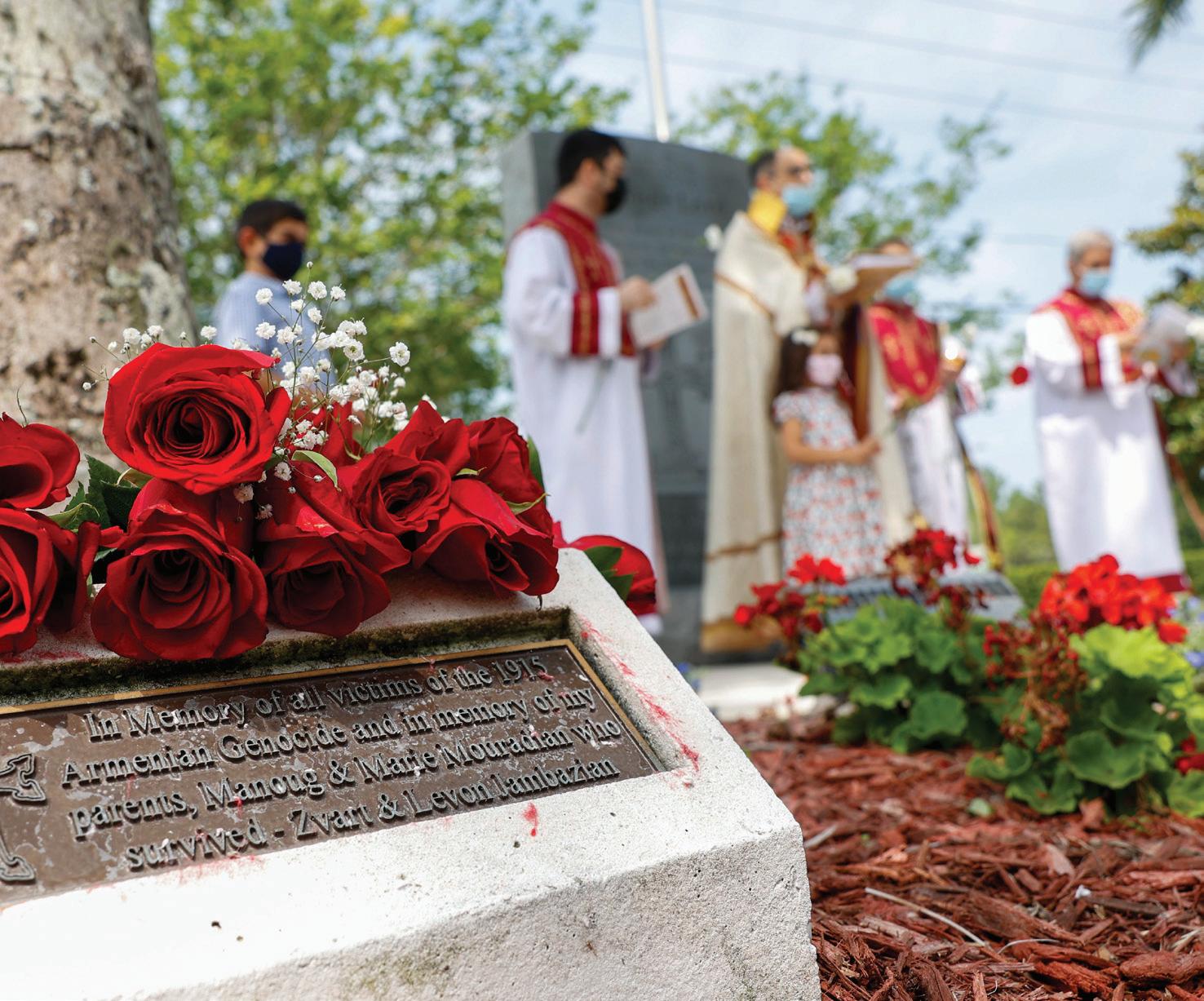
dehydration, exposure and disease. In addition, tens of thousands of Armenian children were forcibly removed from their families and converted to Islam.
Sources: Armenian National Institute; United States Holocaust Memorial Museum
Some historical background
In the 1800s, there were many distinctive ethnic groups living in the Ottoman Empire. One of those groups, the Armenian Christians, formed political organizations during this period, and caused the Ottomans to have doubts about the loyalty of the wider community.
“On October 17, 1895, Armenian

TIMELINE OF KEY EVENTS – crimes against humanity
Assassination of Armenian Genocide perpetrator-in-chief Talaat Pasha in Berlin (Operation Nemesis).
At least 5 million people, including at least 3.9 million Ukranians, died of hunger throughout the Soviet Union during a forced famine led by Josef Stalin (right).
revolutionaries seized the National Bank in Constantinople, the Ottoman capitol, threatening to blow it up along with more than 100 hostages unless the authorities granted Armenian regional autonomy. Though French intervention allowed for a peaceful end to the incident, the Ottomans conducted a series of massacres," according to the United States Holocaust Memorial Museum (USHMM).
In July 1908, a group calling itself the Young Turks seized power in Constantinople. The Young Turks, primarily composed of Balkan-born military officers and bureaucrats,
4 tampabay.com/nie
1921
1931-1934
Josef Stalin. Credit: Shutterstock.
Think about it
This photo shows an Armenian family persecuted during World War I. The photo is part of the exhibit "The Greatest Crime of the War: The Armenian Genocide During World War I" at The Florida Holocaust Museum in St. Petersburg.
Credit: The Florida Holocaust Museum.
wanted to establish a “liberal, secular constitutional regime that put all peoples on equal footing. They argued that nonMuslims would accept Turkish nationalism if modernization and prosperity were the result," notes the USHMM.
In 1909, Armenian demonstrations for independence turned violent. Ottoman soldiers, irregular troops and civilians murdered as many at 20,000 Armenians in and around the city of Adana.
Between 1909 and 1913, Ottoman activists, who wanted a nationalist presence for the Empire, worked to eliminate a multi-ethnic country. In other words, this group wanted the Ottoman Empire to consist of one ethnic group only. The Young Turks, now known as the Committee of Union and Progress (CUP) seized dictatorial power on January 23, 1913. The Ottoman Empire officially entered World War I in 1914. Mass executions, violent robberies, forced marches, rape, starvation and torture were masked during the war.
Source: United States Holocaust Memorial Museum
These two orphaned boys were victims of the Armenian Genocide during World War I, during which more than a million people were forced from their homeland and killed or left to die. The photo is part of the exhibition "The Greatest Crime of the War: The Armenian Genocide During World War I" at The Florida Holocaust Museum in St. Petersburg. Credit: The Florida Holocaust Museum.

Source:
Going beyond the textEyewitness to
genocide
Though eyewitnesses to the Armenian Genocide have passed away, their firsthand testimonies give a human voice to these atrocities. The Armenian Film Foundation’s archive contains nearly 400 interviews of Armenian genocide survivors and witnesses who are now deceased. The original interviews were conducted in 10 countries, primarily in English and Armenian — some in rare Armenian dialects — though other interview languages include Arabic, Greek, Spanish, French, Kurdish, Turkish, German and Russian. Three of these interviews are available at the USC Shoah Foundation website. Before viewing these testimonies, look through the testimonies in this publication and the articles in the Tampa Bay Times and discern how writers use the six essential journalism questions: who, what, where, when, why and how. Next, have your teacher split your class into three groups. Each group will watch one of the following testimonies and write a story about the person giving the testimony to share with your class.

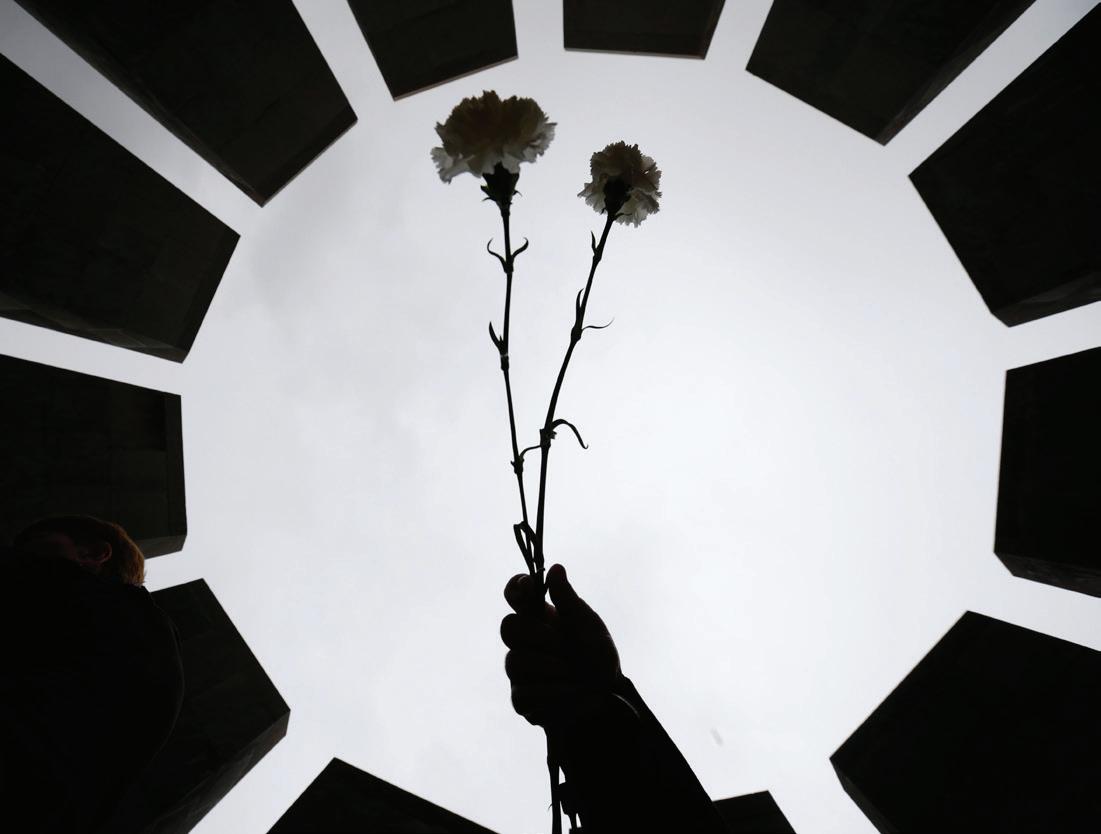
• Mihran Andonian — https://sfi.usc.edu/content/mihran-andonian-testimony
• Haroutune Aivazian – https://sfi.usc.edu/content/haroutune-aivazian-testimony
• Haigas Bonapart – https://sfi.usc.edu/video/haigas-bonapart-armenian-genocide
As a group, watch the testimony and take notes. When you are done taking notes, brainstorm the important points with the other members of your group.. Using the articles in the newspaper and this publication as models, write your own article about one of the three men. Share what you have learned and the key components of your article with your class.
Between 600 and 3,000 Assyrians and Syriac Christians were killed in Iraq during the Simele Massacre.
tampabay.com/nie 5
Define and explore the concept of sovereignty that made it difficult to prosecute perpetrators of genocide by pondering these essential questions in your notebook or journal:
1. What is sovereignty? How should it apply when dealing with crimes against humanity?
2. What is genocide?
3. In what ways can language be powerful? To what extent can language limit or provoke action?
4. How can you turn moral outrage into action?
Facing History and Ourselves
1933
Prejudice and antisemitism
Prejudice is a “pre-judgment or unjustifiable, and usually negative, attitude of one type of individual or group toward another group and its members. Such negative attitudes are typically based on unsupported generalizations (or stereotypes) that deny the right of individual members of certain groups to be recognized and treated as individuals,” notes the National Institutes of Health.
Antisemitism is prejudice against or hatred of Jews. The Holocaust, the state-sponsored persecution and murder of European Jews by Nazi Germany and its collaborators, is history’s most extreme example of antisemitism.
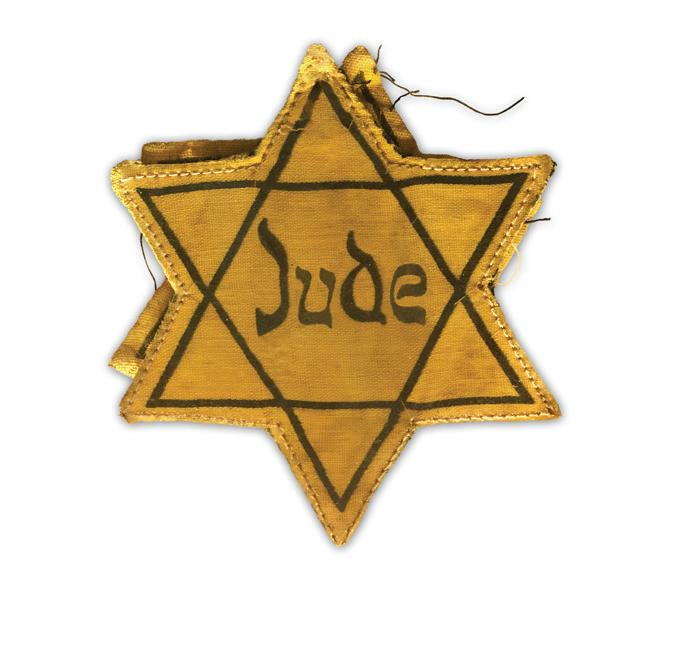
I became interested in genocide because it happened so many times. It happened to the Armenians and after the Armenians, Hitler took action.”
RACISM
Different from racial prejudice, hatred or discrimination, racism involves one group having the power to carry out systematic discrimination through policies and practices of society or the government. Ideology and policies fueled by racism accounted for the Nazis viewing the world as divided into inferior and superior races. Nazi ideology asserted that Jews were not a religious denomination, but instead a non-European “race.” Nazi racism would produce murder on an extraordinary scale.
Source: United States Holocaust Memorial Museum
State-sponsored persecution
The Holocaust was the organized, state-sponsored persecution and murder of six million European Jews by the Nazi German regime and its allies and collaborators. The Holocaust was an evolving procedure that took place throughout Europe between 1933 and 1945.

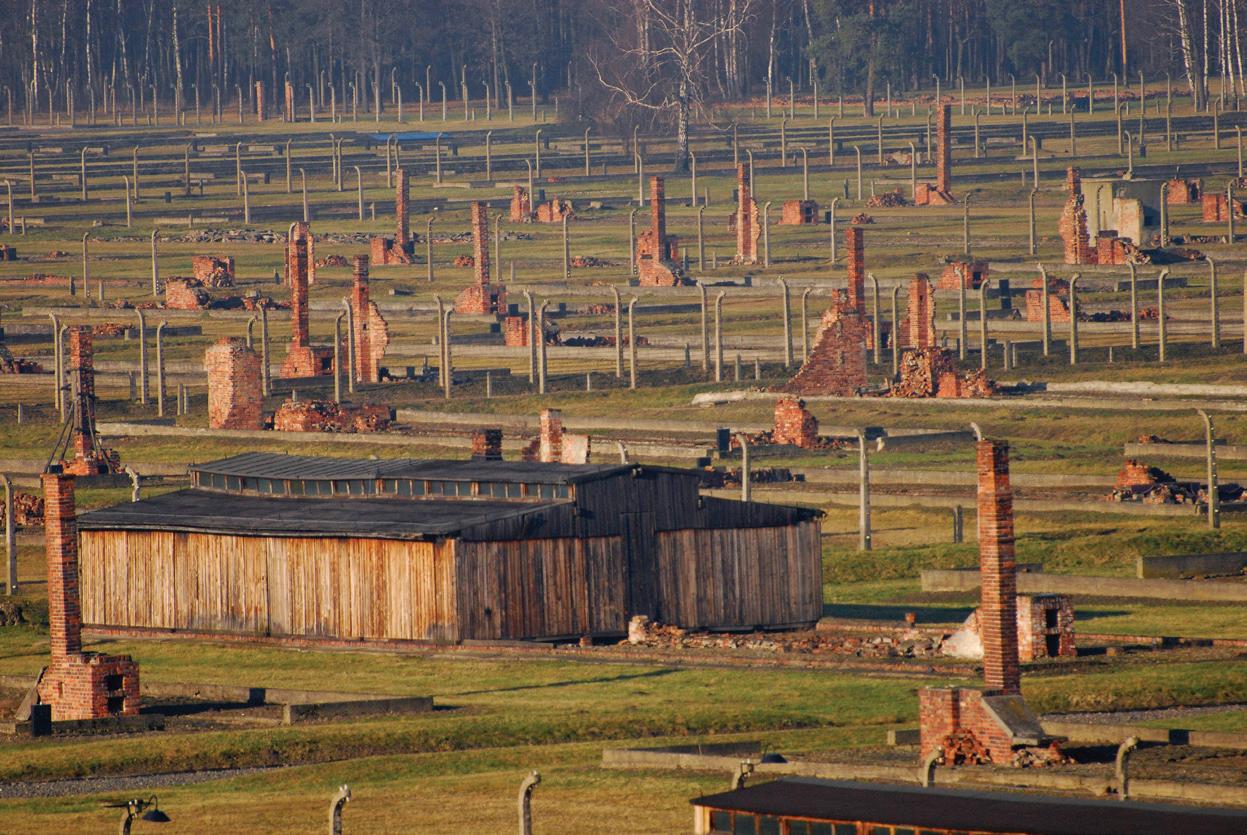
The United States Holocaust Memorial Museum notes, “The Holocaust era began in January 1933 when Adolf Hitler and the Nazi Party came to power in Germany. It ended in May 1945, when the Allied Powers defeated Nazi Germany in World War II. The Holocaust is also sometimes referred to as ‘the Shoah,’ the Hebrew word for ‘catastrophe.’” There are three main facts to keep in mind:
• Antisemitism was at the core of the Holocaust. Antisemitism was, and is, a basic principle of Nazi ideology. This prejudice was widespread throughout the world.
• Nazi Germany’s persecution of Jews evolved and became increasingly more extreme from 1933 through 1945. This radicalization led to the mass murder of six million Jews.
• During World War II, Nazi Germany and its allies and collaborators killed nearly two out of every three European Jews. The killings were conducted using deadly living conditions, brutal maltreatment, mass shootings and gassings, and specially designed killing centers.
TIMELINE OF KEY EVENTS – crimes against humanity
Approximately 11 million people, including six million Jews were killed during the Nazi era.
Adolf Hitler (left) took command of Nazi Germany. 1933-1945
An unknown number of Haitians were killed during the The Parsley Massacre on the island of Hispanola.

6 tampabay.com/nie
1937-1938
1933-1945
Source: United States Holocaust Memorial Museum
This undated photograph provided by the Auschwitz-Birkenau State Museum shows a section of barracks at the Auschwitz-Birkenau State Museum in Oswiecim, Poland. Credit: AP Photo/Pawel Sawicki/Auschwitz-Birkenau State Museum
Auschwitz inmates appear behind barbed wire during the 1945 liberation of the Nazi concentration camp in Poland. Credit: AP Photo
Adolf Hitler, giving Nazi salute.
Credit: Shutterstock
– Raphael Lemkin
Sources: National Institutes of Health; United States Holocaust Memorial Museum
NAZI IDEOLOGY
The Nazis perceived all of human history as “the history of a biologically determined struggle among people of different races.” In 1931, the SS (the Schutzstaffel), an important and exclusive guard for the Nazi Party, established a Race and Settlement Office to conduct race "research." Once the Nazis came to power, the SS grew to become a state within a state in Nazi Germany, and was later charged with the leadership of the “Final Solution,” the murder of European Jews. In 1935, the Nuremberg Race Laws were passed. These laws classified a supposedly biological description of Jewishness.
The Nazis targeted Jews because the government falsely accused Jews of causing Germany’s social, economic, political and cultural problems. Specifically, the Jews were blamed for Germany’s defeat in World War I (1914–1918).
In addition, the Nazi theories of race determined that Germans and other northern
Europeans were "Aryans," a superior race, and anyone that caused a blemish on the master race needed to be eradicated.
During World War II, Nazi physicians conducted medical experiments trying to identify physical evidence of Aryan superiority and non-Aryan inferiority. Despite killing countless non-Aryan prisoners, the doctors could not find any evidence for their theories of biological racial differences among human beings.
Nazis viewed the mentally and physically ill as stains on the master Aryan race. After careful planning, German physicians murdered disabled residents of institutions throughout Germany.
The Nazi regime employed laws and policies that deprived Jews, Black people, homosexuals and Roma of their rights.
Source: United States Holocaust Memorial Museum
'THE FINAL SOLUTION'
The term “Final Solution of the Jewish Question” was used by Nazi Germany’s leaders to refer to the mass murder of Europe’s Jews. The “Final Solution” was the culmination of a decade of increasingly severe discriminatory, anti-Jewish measures implemented by the Nazis. Although it is unclear specifically when Adolf Hitler decided to murder Jews, the decision seems to coincide with Germany’s invasion of the Soviet Union in 1941. The Nazi leaders planned on killing 11 million Jews, and they succeed in killing six million.
Source: United States Holocaust Memorial Museum
The Florida Holocaust Museum is home to one of the few remaining railroad boxcars of the type used by the Nazis to transport Jews and other prisoners to places like Auschwitz and Treblinka. Boxcar #113 069-5 now rests on original tracks from the Treblinka Killing Center as a silent tribute to those who perished in the Holocaust and is featured as part of the History, Heritage and Hope permanent exhibition.
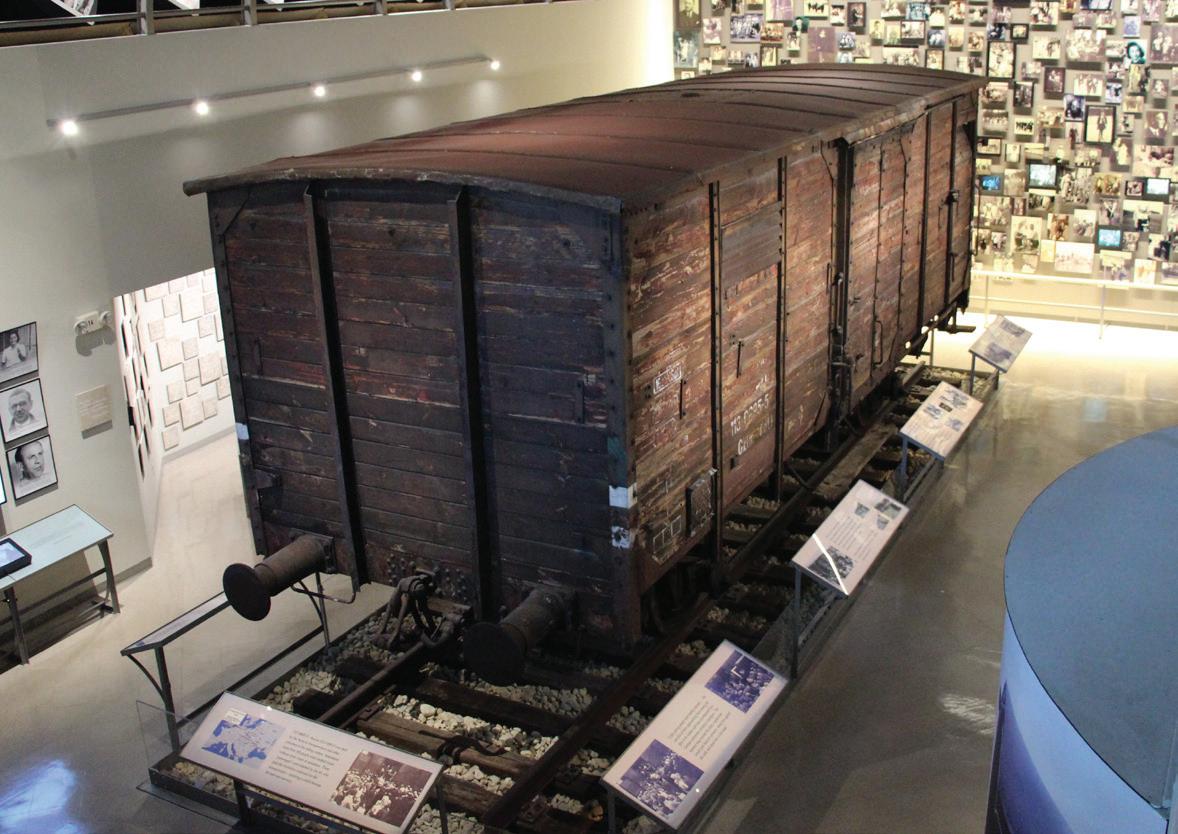
Credit: The Florida Holocaust Museum
Between 100,000 and 300,000 Chinese people were killed during the Nanjing Massacre during the Sino-Japanese War.
Going beyond the text
Systematic genocide
Under the rule of Adolf Hitler, the persecution and segregation of Jews was implemented in stages. After the Nazi Party achieved power in Germany in 1933, its state-sponsored racism led to anti-Jewish legislation, economic boycotts, pogroms, and the violence of the Kristallnacht ("Night of Broken Glass"), ... all of which aimed to systematically isolate Jews from society and drive them out of the country. Using the United States Holocaust Memorial Museum and The Florida Holocaust Museum websites, research the key events from the Holocaust and create a timeline of those events. Next, view the editorial cartoons in the Tampa Bay Times and those posted on Cartoons for the Classroom, https://nieonline.com/ tbtimes/cftc.cfm, and create a political cartoon depicting one of these critical events. Share your cartoon with your classmates and explain why you chose this event.
Think about it
Raphael Lemkin was instrumental in the drafting and the adoption of the United Nations Convention on the Prevention and Punishment of the Crime of Genocide. With the ratification of this treaty, Lemkin's original goal was realized. Yet, since the Genocide Convention was adopted in 1948, genocides have continued around the world. While Lemkin worked to create a law when one did not exist, today's activists focus on pressuring politicians to use this law as a means to prevent genocide. With your class, brainstorm your responses to these essential questions:
1. If we have a Genocide Convention, why does genocide still happen?
2. What can individuals and nations do to prevent and stop genocide?
Write down your thoughts in a notebook or journal.
Source: Facing History and Ourselves
The United Nations and the International Court of Justice (ICJ) were established. The Nuremberg Trials took place at the International Military Tribunal.
Prisoners in the concentration camp at Sachsenhausen, Germany, Dec. 19, 1938. Located 22 miles north of Berlin, it was near the administrative center of all the Nazi concentration camps in Oranienburg.
Credit: Shutterstock

tampabay.com/nie 7
1937-1938
1945-1946
EYEWITNESS : Mary Wygodski
1) 1932 Pospieszki, Brother Chaim is on Mary Wygodski's left, mother Chasia is behind. Along with Aunt Genia (mother’s sister) and 4 cousins, Ber, Tzila, Mila and Mania.; 2) 1929 or 1930. mother Chasia, father Faive, brothers Chaim and Benia (died early 1930s).; 3) 1931 Pospieszki, Mother, father, brother Chaim on right Aunt Genia, Uncle Yisroel, Ber, Tzila, Mila, Manya. Credit: The Florida Holocaust Museum, courtesy of Mary Wygodski
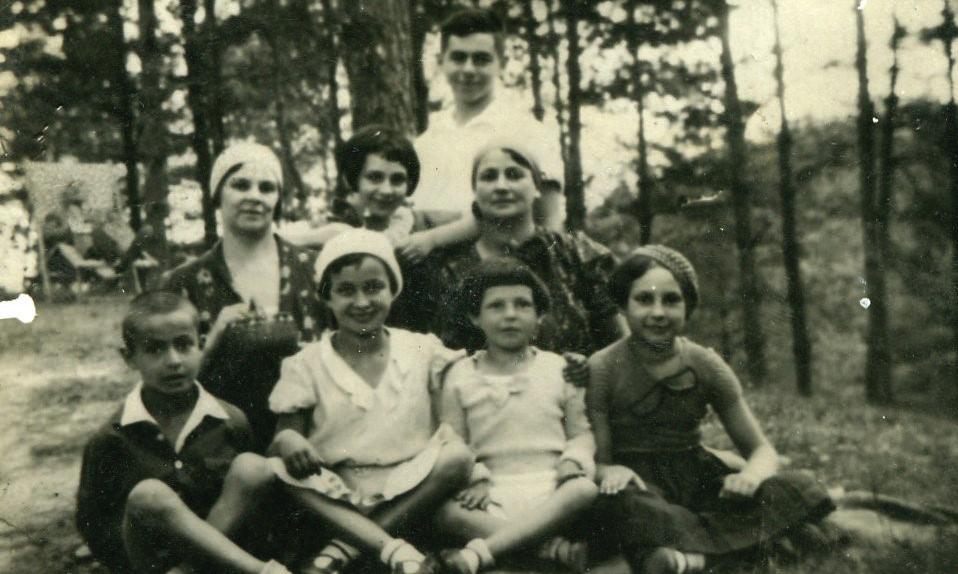

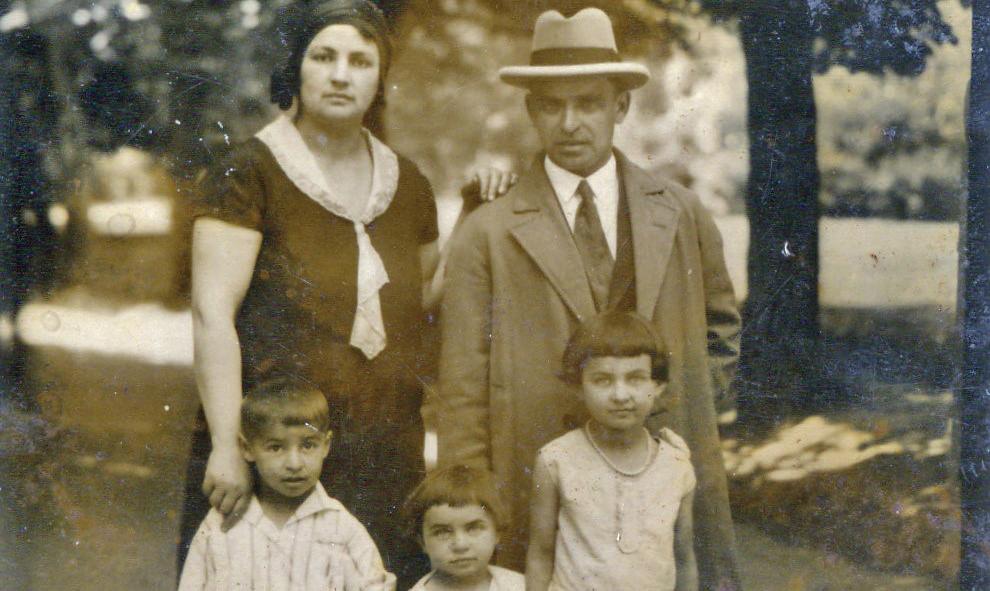
St. Petersburg resident Mary Wygodski had an idyllic childhood. Born on Aug. 11, 1925, in Vilna, Poland, she was the oldest of five children. She and her brother attended private schools. The family lived in a five-bedroom apartment and had a summer home in the country.
When Hitler invaded Poland in September 1939, things drastically changed. Thousands of refugees from other parts of Poland poured into Vilna, which was under Soviet occupation at the time.
Under new German laws, Jewish businesses were subject to boycott. Jewish books were burned. Jews were banned from the arts, broadcasting and the press. Jewish lawyers could not practice law and Jewish doctors could treat only Jewish patients. Jews were forbidden from owning land.
Life in the ghetto
When Germany took over Vilna on June 22, 1941,the ghettoization of Jews began. "We were closed in. We lived in one room, and we had no source to go shopping,” Wygodski recalls. “But there are many things that were good. There was a theater and many other good things, including a school, which I
attended with many students. This was all at the beginning.”
She notes that “things changed slowly." Schools began closing. Religion and the Hebrew language were banned from being taught. Libraries closed. The Polish people blamed the Jews for food shortages and riots broke out in the streets.
New rules
On July 4, 1941, new rules and restrictions changed every Jewish life. Jews were banned from public transportation. Their personal possessions, including radios and bicycles, were confiscated by soldiers. Jews were permitted to shop in specific stores only at certain times of the day. Jews were not allowed on certain streets.
“I had to wear a yellow Star of David on my clothing whenever I left the house,” Wygodski says.
Each day, hundreds of people were “snatched” off the streets and sent to work camps or were killed.
Liquidating the ghettos
After the uprising at the Warsaw Ghetto in 1943, the German officials quickly set out liquidating all the ghettos, sending many people to work camps and killing
TIMELINE OF KEY EVENTS – crimes against humanity
Thousands of Muslims were killed in the Jammu Massacre in Kashmir, India.
For the dead and the living, we must bear witness.”
―
Elie
Wiesel, survivor, writer
friends. They worked from dawn until night. They had little food. After almost a year, she was transferred to a transit camp for about three weeks, where she was saved from a second brush with death.
Her next stop was a concentration camp at Stutthof, in the territory annexed by Germany.
thousands of others. Wygodski and her family went into hiding, but eventually, the family was rounded up and separated.
“On September 24, 1943, I watched my father and brother Chaim climb into trucks to be taken to the train station, and moments later I left my mother and sisters,” Wygodski says. “We never saw each other again. At the age of 18, I was alone.”
Stripped of dignity
Forcefully separated from her mother and sister, Wygodski was thrown into a train boxcar, like the one pictured on page 7, filled with hundreds of other people. There was no ventilation, windows or bathroom facilities. By chance, she wound up next to two of her school friends.
Wygodski recalls that the first days in the concentration camp in Riga were the most difficult. In her book, Mary's Story, she writes, “We were stripped of dignity and possessions and assaulted by foul smells, shouts and screams.”
Wygodski tried to commit suicide by jumping in the river, but she was saved by two men.
Wygodski worked in the camp's munitions factory with her two school
A matter of fortune
At Stutthof, Wygodski was excited about the opportunity to take a shower.
She recalls waiting for a shower and thinking “this was the best moment in my life that I could take a shower. And as I came to the door, the guard, the German guard said, ‘halt, no more. We have no more room.’ I was terrified. I was trying to have a shower and couldn't have it. All the people that went before me were gassed.”
Wygodski recalls her next good fortune was that her friend and friend’s mother were selected to go to work and were able to get Wygodski into the work line by bribing a soldier with gold. “This was the third time that I was lucky to be alive.”
The last stop was Magdeburg, a subcamp of Buchenwald.
After two years of torturous conditions, Wygodski was finally liberated by American soldiers.
She believes telling her story and supporting The Florida Holocaust Museum is very important. She says, “There are so many deniers, many liars, and much distortion. That's why I'm here to tell the truth."
Think about it
The United Nations Convention on the Prevention and Punishment of the Crime of Genocide and the United Nations Universal Declaration of Human Rights were established.
Think about Elie Wiesel’s quote at the top of these pages. How does this quote relate to the two stories you have just read? What is the significance of these words in telling survivor stories?
8 tampabay.com/nie
1947
1948
EYEWITNESS: Toni Rinde
little things bring that memory up again. I remember the noise of bombs falling. I remember my father carrying me down the steps. I can even tell you what that staircase looked like. We were going to the basement in an apartment building. Dark steps. The wall was dark stone.”
She notes, “I didn't look like other kids. My hairstyle was not the same. My clothing was not the same. I didn't speak the language and I didn't know how to read and write. "Kids can be cruel," she notes. "And they were."
Rinde’s family came to the United States on an agriculture visa, and they moved around a bit. She transferred schools a lot, which made it difficult to keep friends. There were no young children where she lived.
A positive approach
Toni Rinde, a St. Petersburg resident, was born approximately 14 months after the war broke out. Both of her parents were in their 20s and were just starting to get established in their lives when the war broke out. Rinde's family and the rest of the Jews of Przemysl were herded into a ghetto.

“I went into hiding with my parents and after a few months going from one place to another, they realized this was not going to work,” Rinde says, especially when she became sick.
The family had to make a difficult decision. “My parents realized if they didn't give me away, I would be killed because children were being killed,” Rinde says. “More than one million children were killed during the Holocaust."
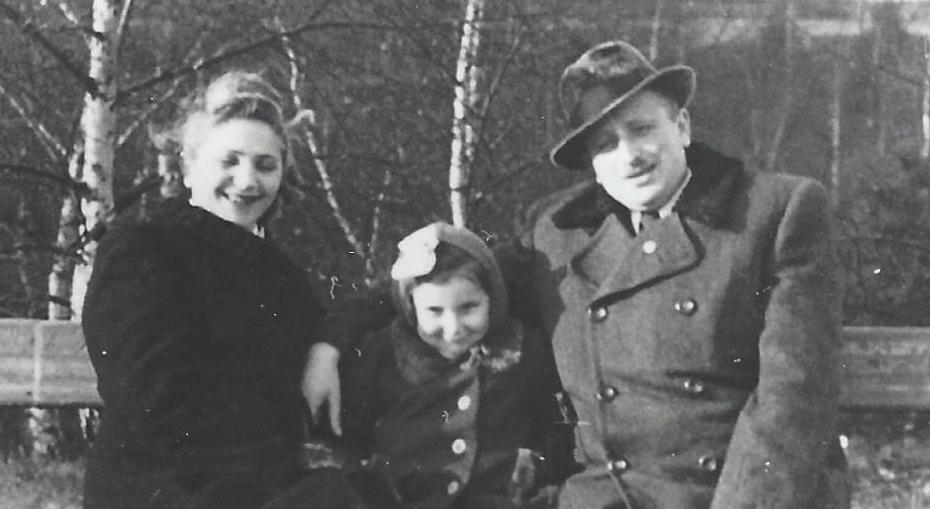
“As they all say, I'm proof that your formative years are very influential as to what and who you become in life,” states Rinde. “I have a hard time discussing my entire picture. I do it of course,” for two primary reasons.
“Number one, it's important to tell the story, to make sure that things of that matter of that massive horror do not happen again. Number two, to show people that even though a person goes through a tragedy as a child, you can grow up and be a very productive, fruitful human being.”
Memories
Rinde says, “When traumatic incidents happen, they stick in your mind and
Rinde was taken in by a Catholic woman named Zofia Koniosna. She lived with this woman's family for three and a half years. Rinde was hiding in plain sight under an assumed identity, being raised Catholic and praying with her new family. “I went to church, I learned catechism. I learned prayers.” She prayed for her parents, who came to get her once the war ended.
A new world
After the war ended, antisemitism was alive and well in Poland. Rinde and her family moved around Europe, hoping to get a visa to a place where they could start a new life. Eventually, they moved to the United States to join her uncle. Her parents had a hard time. “They had just been through hell and back. They didn’t know how to raise a child.”
Rinde was 7 years old and had never been to school. She had to learn English as well as learn to read and write. She also needed to learn to make friends, which was difficult because she experienced antisemitism around her non-Jewish schoolmates. Rinde next attended a yeshiva, a private Hebrew school in New York City, where she learned Hebrew and English. “My parents were very concerned about people who were not Jewish.”
Going beyond the text
Children and conflict
Kids are resilient, though. “We get so concerned about kids, but they bounce back and they do what is expected of them without even thinking about it. You just do what needs to be done," she said.
Rinde’s advice to young people is to approach things from a positive perspective. Rinde and her husband John, also a Holocaust survivor, continue to speak to school groups at The Florida Holocaust Museum. “Things are going to be okay no matter what steps you have to take to get there.” She shares that people should treat everyone equally. “Don’t do something to others that you would not want done to yourself. That famous golden rule can be repeated over and over and over. Be kind, be nice, be understanding. It's much easier to be nice rather than be nasty. It takes effort to be nasty. Always look for the best part in everybody; that I think is the way life has to be."
Although “antisemitism is so deeply seated, rooted over thousands of years … the reality is if we don't make an effort to try to change, if we don't teach, if we don't show that being hurtful to another human being is non-productive, if we can all work together rather than against each other, the world would be such a wonderful place for all of us to live in."
The Inter-American Commission on Human Rights (IACHR) is created.
Tens of millions of children are growing up in countries affected by armed conflict. In countries such as Afghanistan, the Central African Republic, Democratic Republic of the Congo, Iraq, Nigeria, Somalia, South Sudan, Syria , Myanmar and Yemen, children are being killed, maimed, abducted, sexually abused and recruited and used by armed groups. Children and teens make up a third of fighters in the armed groups fighting in Yemen. Of the 20 countries with the world’s highest under-5 mortality rates, 13 are affected by conflict or violence. Use the website of the Office of the Special Representative of the Secretary-General for Children and Armed Conflict (childrenandarmedconflict.un.org) and the Tampa Bay Times to find out more about one of the conflicts. Plan a service-learning project based around this issue. Your plan should include academic and service goals and strategies for assessment. Visit the Corporation for National and Community Service’s website at serve.gov/?q=site-page/toolkits for lots of resources to help you plan your project.
Sources: GlobalSecurity.org, Human Security Research
tampabay.com/nie 9
1959
Credit: The Florida Holocaust Museum, courtesy of Toni Rinde (née Igel).
Think about it
Sophal Leng Stagg was 9 years old when her world was turned upside down. As you read her story, think about how your childhood experiences shape your identity. Write down your thoughts in your journal or notebook.
The Khmer Rouge
Lasting from 1975 through 1979, the Cambodian Genocide was an eruption of mass violence that resulted in the deaths of 1.5 million to 3 million people at the hands of the Khmer Rouge, a communist political group. The communist government enforced a ruthless agenda of forced labor, thought control, mass displacements and mass execution in Cambodia.
The goal for the Khmer Rouge was, “to transform the Southeast Asian country into a classless agrarian utopia. The result was an ancient society’s wholesale destruction and a horrifying new term for the world to confront: ‘the killing fields,'" according to the United States Holocaust Memorial Museum.
The Khmer Rouge forcibly took people from the cities, their villages and homes and put them to work as slaves digging canals and tending crops. Soldiers marched millions of people into the countryside.
Sources: Regents of the University of Minnesota; United States Holocaust Memorial Museum
A brutal dictator
Born Saloth Sar on May 19, 1925 in central Cambodia, Pol Pot was a brutal dictator. In 1953, Pol Pot became one of the leaders of an underground communist movement, the "Khmer Rouge." In April 1975, the Khmer Rouge captured the Cambodian capital, Phnom Penh. Pot and his army reset the calendar to "Year Zero" and attempted to transform Cambodia into their vision of a communist, rural society. All residents of Cambodian cities and towns were banished from their homes to work in agricultural communes. “Money, private property and religion were abolished. Thousands were murdered in special detention centers and thousands more died from starvation and overwork.”
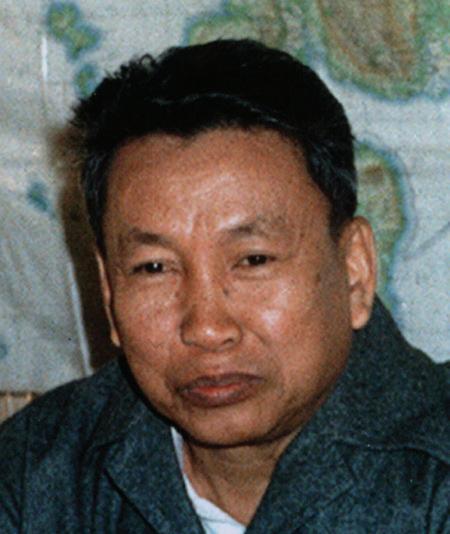
Source: British Broadcasting Company
Left: Cambodian children stand by one of the many killing field sites, at a school in Tonle Battye on the outskirts of Phnom Penh Sunday, July 27, 1997.

Credit: AP Photo/Richard Vogel.
It is important for me that the new generation of Cambodians and Cambodian Americans become active and tell the world what happened to them and their families ... I want them never to forget the faces of their relatives and friends who were killed during that time. The dead are crying out for justice."
-Dith Pran, photojournalist, survivor
TIMELINE OF KEY EVENTS – crimes against humanity
Approximately 3 million Pakistanis were massacred in Bangladesh. 1971
In the four years that the Khmer Rouge ruled Cambodia, it was responsible for the deaths of 1.5 million to 3 million people. 1975
Going beyond the text
A complicated period
The Cambodian Genocide represents a complicated time in history. In the early 1970s, U.S. diplomats raised concerns about the potential for mass atrocities in Cambodia. Comparisons between Nazi Germany and the Soviet Union were made. The level of support the Khmer Rouge received from fellow communist states North Vietnam and China also meant there were concerns over the spread of communism in Southeast Asia. Research Pol Pot and the Khmer Rouge and write a news article describing their rise and fall from power. Use the newspaper articles in the Tampa Bay Times as models. Share what you learn with your class.

A man cleans a skull near a mass grave at the Chaung Ek torture camp run by the Khmer Rouge in this undated photo.
Credit: AP photo/Jeff Widener.

10 tampabay.com/nie
Khmer Rouge leader Pol Pot is shown in this Dec. 11, 1979, photo at his base in a Cambodian jungle near the Thai border. Credit: AP Photo
EYEWITNESS : Sophal Leng Stagg
On the night of April 16, 1975, 9-year-old Sophal Leng Stagg and her family were awakened by the sounds of bombs and guns. “The explosions were so near that our house shook with each burst,” Stagg, sitting in the kitchen of her Largo home, recalls. Her family took shelter underneath the house, where they spent the night wide awake.
One of eight children, Stagg had a typical childhood with devout Buddhist parents. She and her family were getting ready to celebrate the Cambodian New Year when their world imploded and the Khmer Rouge took over the capital city of Phnom Penh.
It took four years for the torture to end, but the nightmare lasted far longer. Stagg writes in her autobiographical book Hear Me Now, “although I can now look back with less emotions, the memories of that time are as vivid as if they happened yesterday.”
Divide and conquer
The first thing the Khmer Rouge did was separate families from their homes. Soldiers herded men, women and children through the streets of the city with no stopping for rest or food. Those who fell were left to die or shot.
“We started packing immediately, but the Khmer Rouge continued to harass us with warnings and threats while we rushed to get our possessions together,” Stagg writes. They didn’t know where they were going or how long they would be gone. “We were close to a state of paralysis.”
Walking for 16-hour stretches in the southeast Asian heat, the people from the capital city of Cambodia were marched into rural areas. Basically, they had the clothes on their backs and flip flops on their feet.
Soldiers had guns and bullhorns urging people to leave the city. Stagg remembers family members trying to hold onto each other, so they wouldn’t be separated.
“They wouldn't let anyone turn around. You had to keep following the groups,” Stagg says. "You had to keep moving," she says. “If you stopped, then there was a traffic jam and they started yelling and shooting.”
Even those families that tried to stay together were eventually separated. Men and women were sent to separate rice fields and jungles. As one of the youngest members of the women’s group, Stagg said she wasn’t afraid to die. Her greatest fear was for her mother not to know where she was.
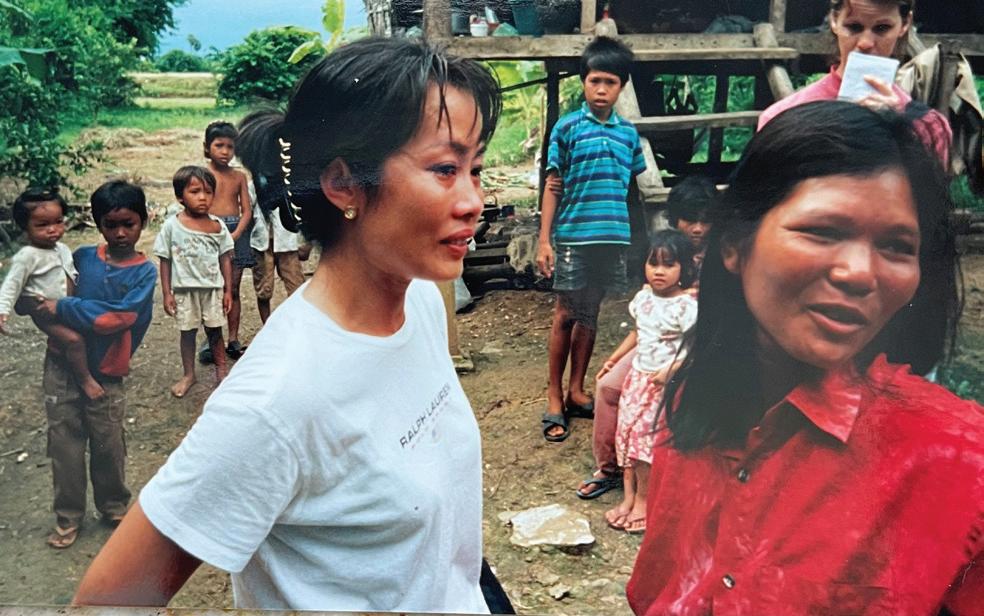
As they marched miles and miles from home, Stagg saw many women searching for their lost families.
The killing fields
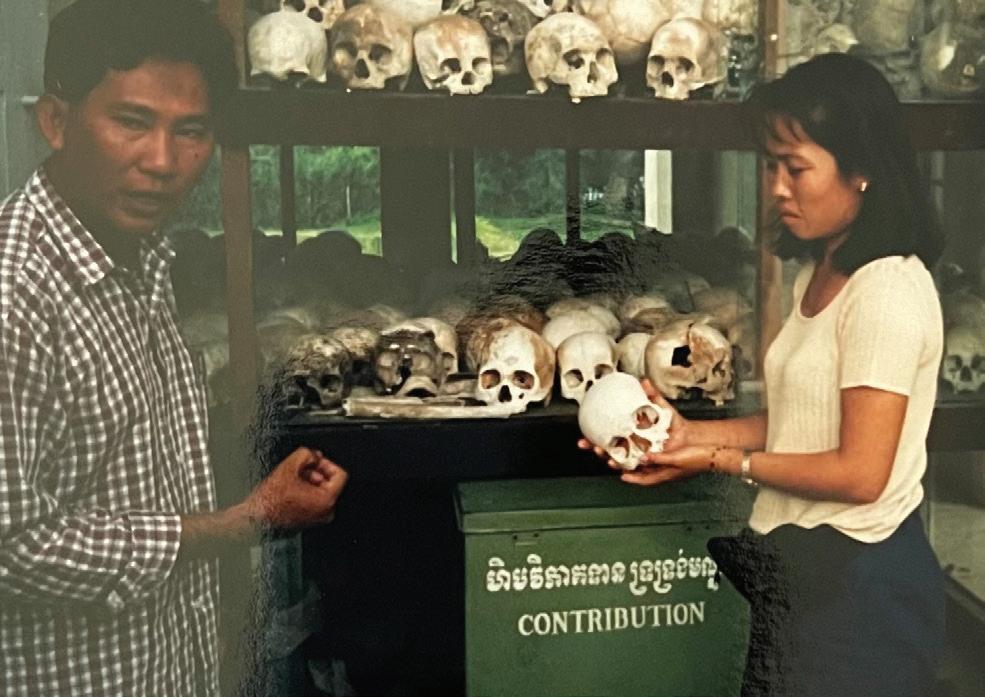
Stagg describes the back-breaking work she endured, but the pain of hard labor and hunger were nothing compared to
the pain of not being with her family. Despite the punishment of death, Stagg spent a lot of time looking for her family. “I just wanted them to know where I am because dying alone is terrible,” she says.
The leeches and snakes were terrifying as well. Working in the heat was torturous. Stagg describes April as being like August in Florida. The fear of never seeing her parents, especially her mother, again was overwhelming.
While working in the fields and the jungle, and living in huts, Stagg quickly learned how to lie about how she felt, about her previous life and about being hungry and in pain. Stagg says they would break down people constantly. “I had to pretend, even though I miss my mom so very much, but I can't say, even though I'm so hungry, but I can't say I'm hungry.”
People who didn’t agree with the soldiers were verbally abused and separated into smaller groups that were constantly watched. Stagg says she didn’t want to stick out like a sore thumb. She just wanted to fit in.
After working all day, the group was forced to listen to propaganda until 3 or 4 in the morning. If you fell asleep, you were beaten with a stick.

There were no showers. There were no comfortable mattresses. They were fed meager portions of watereddown rice two times a day. They were threatened with torture of themselves and their families. If you complained, they would take your family away at nighttime.
Hear me now
It is important for people to known what happened in Cambodia, Stagg asserts. “It’s very easy to just bury it and go on, but you cannot really bury it. It's going to surface up and it's going to haunt you. It's going to pull you down.”
Although the Khmer Rouge stole Stagg’s adolescence, she is not going to allow them to rob her of the rest of her life.
“It just a matter of survival,” Stagg says. “Looking back, every single day is a miracle for me now, because back then I
didn’t even know if I would live through it. You know, it was just purely day by day.”
Stagg notes, “Maybe that's why I'm alive, because I was one of the youngest." She contends that if she were older, it would have been more difficult mentally and physically.
“Sometimes I thank God that it happened to me when I was young, because if I was older, it probably would affect me worse, I think.”
Stagg was told she had to report her parents if they worked for the government. She was constantly being told education was bad. She learned not to trust people.
“I learned a lot from them. They are the ones who taught me to not say anything.”
Choices
When Stagg looks back, she considers herself lucky to have survived. She risked her life trying to locate and help her family members. Even foraging in the jungle for mushrooms, plants and small animals was dangerous. She was lucky the groups of women took her as part of their work group, even though she was the smallest.
Her advice to others is “Don’t take life for granted. Enjoy what you have and appreciate what you have. I think life is a choice. How you make that choice. That is on the individual,” Stagg says. “How you want to make it. That is a choice.”
tampabay.com/nie 11
Sophal Leng Stagg during one of her trips to bring humanitarian aid to impoverished people in Cambodia. Photos courtesy of Sophal Leng Stagg.
Sophal Leng Stagg and her husband Bill work with teachers at The Florida Holocaust Museum. Credit: The Florida Holocaust Museum
Desmond Tutu, human rights activist
Think about it
Rising inflation and the failure of federal commissions on the economy and the political framework to change Yugoslavia’s course opened the way for new party leaders. Slobodan Milosevic, one of the “postliberal generation of local leaders,” used the country’s protests to rise to power in the late 1980s, notes Encyclopaedia Britannica.
Republic of Bosnia and Herzegovina
After World War II, the countries of Bosnia, Serbia, Montenegro, Croatia, Slovenia and Macedonia unified to form the Federal Republic of Yugoslavia. This new nation encompassed different ethnic groups, including Serbs (Orthodox Christians), Croats (Catholics), Bosniaks (Muslims) and ethnic Albanians (Muslims).
“There had long been a history of tensions in the Balkans between these groups,” notes the United States Holocaust Memorial Museum. The tensions were at a peak during World War II when some groups, such as the Croats, joined with Nazi Germany. When Yugoslavia’s president Josip Tito died in 1980, Yugoslavia “spiraled into chaos, and some of the republics and ethnic groups expressed the desire for independence. Yugoslav republics began declaring their independence in 1990.
On April 5, 1992, the government of Bosnia declared its independence from Yugoslavia. The Bosniak majority, opposed by Bosnian Serbs, launched a military campaign to “secure coveted territory and ‘cleanse’ Bosnia of its Muslim civilian population. The Serbs targeted Bosniak and Croatian civilians in areas under their control, in what has become known as ‘ethnic cleansing.’”
During the civil war and subsequent genocide, which lasted from 1992 to 1995, an estimated 100,000 people were killed, 80 percent of whom were Bosniaks. In July 1995, Bosnian Serb forces killed as many as 8,000 Bosniak men and boys from the town of Srebrenica.

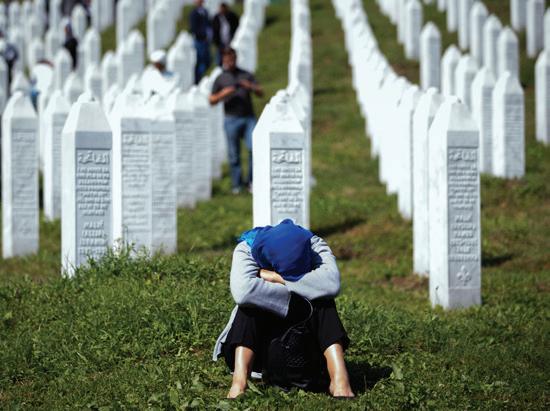
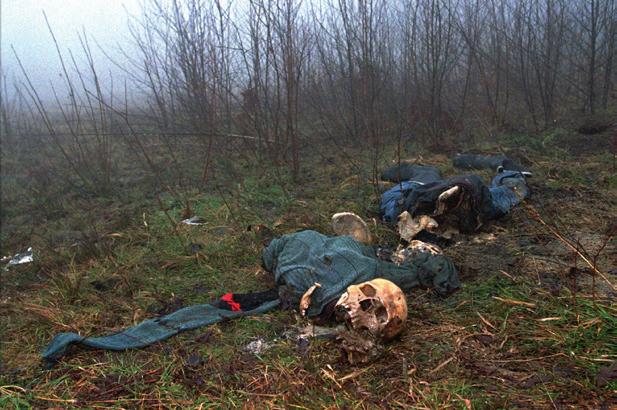
TIMELINE OF KEY EVENTS – crimes against humanity
The Red Terror was a campaign of urban counter-insurgency by the Soviet Union in the major cities of Ethiopia. At least 10,000 people died.
On April 6, 1994, a surface-to-air missile shot down the plane carrying Rwanda’s president, Juvenal Habyarimana, a Hutu, as it was landing in Kigali, the Rwandan capital. During the following three months, more than 1 million Tutsis and moderate Hutus were massacred in Rwanda.
Milosevic maintained his power by “repression and control of the mass media.” He nullified the constitutional autonomy of the Albanian province of Kosovo in 1989, which “contributed to the secessionist movements in Slovenia, Croatia and Macedonia and the breakup of Yugoslavia in 1991. He then supported Serbian militias fighting Muslims in Bosnia and Croatia.”
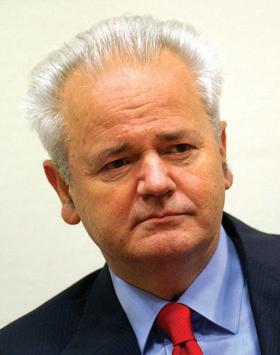
Source: Encyclopaedia Britannica
Going beyond the text Having empathy
Maya Kazazic, whose interview is on the next page, says, “If you don't have empathy, then what you're doing is you're taking a stance and it's your way or the wrong way.” Without empathy, there is no compromising, no understanding. Kazazic says it's important to support others and embrace their differences. Look up the word “empathy” in the dictionary. Based on the definitions you find, write a journal entry defining the word, using specific examples to support your definition. Next, look for an example of empathy in the Tampa Bay Times. Share what you have learned and your thoughts with your classmates.
On September 2, 1998, Jean-Paul Akayesu was judged guilty of genocide and crimes against humanity for acts he engaged in and oversaw as mayor of the Rwandan town of Taba. This was the first-ever genocide conviction.
The International Criminal Court (ICC) was founded.
12 tampabay.com/nie
Source: United Holocaust Memorial Museum
1994
2002
1998
As much as the world has an instinct for evil and is a breeding ground for genocide, holocaust, slavery, racism, war, oppression and injustice, the world has an even greater instinct for goodness, rebirth, mercy, beauty, truth, freedom and love.
–
Former Yugoslav leader Slobodan Milosevic Credit: AP photo/Dusan Vranic, Pool
Above left: A woman mourns next to one of 775 graves that were dug at the Srebrenica memorial in Potocari, Bosnia and Herzegovina at the 15th anniversary of the Srebrenica genocide. Credit: Scott McIntyre.; Top right: A woman rests at the memorial cemetery prior to the funeral in Potocari, near Srebrenica, Bosnia. Credit: AP photo/Darko Bandic.; Above right: Skeletons lie in a misty field on a hilltop just west of Srebrenica on Feb. 4, 1996, during UN investigations trying to trace thousands of missing Muslim men after the Serb conquest of the former Muslim enclave of Srebrenica. Credit: AP photo/Alexander Zemlianichenko.
1976-1978
EYEWITNESS : Maja Kazazic
When Maja Kazazic was a child living in Yugoslavia, she dreamed of being an athlete, playing soccer and basketball. Like many other 16-year-olds, she made plans and had a vision of what her life would look like. Now, sitting in her home in Largo, she recalls that she planned to earn her Ph.D. in physical education.
Everything changed with the explosion of a bomb.
Civil war and genocide
Life was not easy in Bosnia in the 1990s. The civil war progressed slowly but steadily.
Kazazic explains the state of her country with the analogy of boiling a frog. If you put a frog in boiling water, it will jump out, but if you heat the water slowly, the frog will not know what is happening and it will die.
Kazazic’s family stayed in their home city of Mostar despite the chaos happening around them. They followed the rules of war and stayed behind closed doors most of the time. They hid in the basement when the bombs and bullets were flying. As the frog adjusts to the hot water, the people adjusted to war. Schools closed. There was very little to eat. There was no electricity. They had to create a system to get water from the river because there was no running water in their homes. At one point, the 16-yearold sacrificed her pet rabbit so the family could eat protein with their daily diet of grass-like vegetables and soup.
Breaking the rules
One day, Kazazic was chatting with her friends who were hanging out in an area that was enclosed by walls. She couldn’t hear her friends' conversation clearly, so she decided to sit on top of the wall to communicate.
As she and her friends talked, a bomb exploded inside the structure. All five of
her friends were killed instantly. Kazazic was severely injured.
Due to the lack of medical resources, her leg had to be amputated without anesthesia, and the only way to fight the infection in her body was to cut the infected flesh off twice per day. For pain, she only had a teddy bear she would bite and scream into until it was over.
Loss and pain
Kazazic recalls the entire situation being an out-of-body experience. “When it first happened, I couldn't understand what was happening. It was some kind of visual dementia or something like that. Like, you hear all the words and you understand every word, but together it doesn't make sense. This is kind of how it was for me.
“I started kind of like looking around. And I started looking in the concentric circles where I was, having my legs throbbing. I could see my shoelaces they were bloody.”
When she looked in a bigger circle, she saw the devastation of the bomb’s explosion on the rest of her friends. It didn’t seem real.
“As my mom came, I said to my mom, ‘Wake me up. I think I'm dreaming.’ And she said, ‘no, you're not dreaming.’ I said, 'No, no, no, wake me up. This can't be real.’ ”
Kazazic remembers thinking, “I didn't do anything.” She notes that when countries are torn up by war, the one thing people do not see in the news is “the thousands and thousands of innocent children. That became so real to me, that this was so unfair.”
Kazazic was in the hospital for a couple of months before she was rescued by British humanitarian Sally Becker. “If Sally Becker came to rescue me a week later, I would probably be dead. We had no food, no medicine, nothing.” Every morning and evening the doctors came to change the dressing on her legs. “They cut the flesh off. They tried to clean the infection.
After Becker's visit, Kazazic found herself on a stretcher not knowing where she was going, or when or if she would be back. She left her parents and everything she had known and loved behind. She ended up in a U.S. Army hospital in Germany and eventually in the USA, where she received medical treatment.
Even though her left leg was amputated, and her right leg was badly injured, she still had dreams of playing soccer again and running.
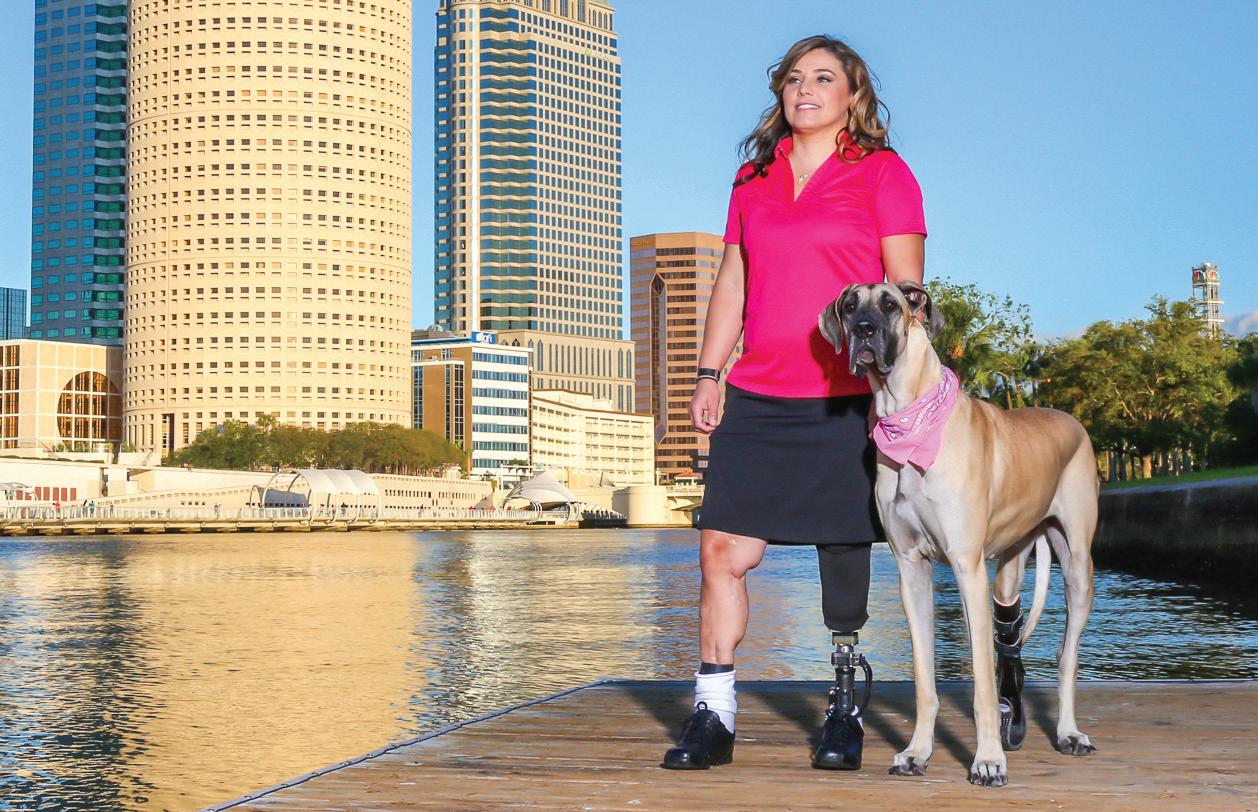
“It took me 15 years to learn how to run again." Her first set of prosthetics were custom made, but not ideal. Then she met the people who created the prosthetic for Winter the dolphin, Hangar Prosthetics and Orthotics. She contacted the Clearwater company, and they were able to rise to the challenge. Ten days after she was fitted for the new leg and brace, she was playing tennis.
Everything seemed to be going well at this point. “I was finally able to run. I'm living in a place that I love, Florida. I picked out a house. My house was paid for. My car was paid for, I was running my own software company. And I had my own money. I had freedom. And I was sitting one day on my couch, in the living room. And I thought I was having a heart attack.“
What turned out to be a panic attack became a diagnosis of Post-Traumatic Stress Disorder (PTSD). “My body was falling apart, and I was losing control of everything. I was becoming afraid of food. I wasn't eating. I was afraid to go outside. I was claustrophobic and agoraphobic at the same time. So I would literally sit on my porch and cry.”
Never losing hope, Kazazic knew she would get through this, and once again, help came from an unexpected source: a Great Dane puppy named Rosie.
When Rosie was only a few weeks old, her mom accidently stepped on her paw, breaking it. Rosie was taken immediately to the vet, but unfortunately, due to infection, they were not able to save her leg.
One day when Kazazic was visiting the Hanger clinic, they told her about Rosie. Rosie has been Kazazic's constant companion since then.
Want to learn more about Maja Kazazic? Check out her website at majakazazic.com.
tampabay.com/nie 13
Maja Kazazic and Rosie taking a walk on the Hillsborough River. Photo courtesy of Maja Kazazic.
Think about it
Beginning in 1993, Hutu political leaders began to import large numbers of machetes and distributed the weapons to the militias that supported them: the Interahamwe (“Those Who Attack Together”) and the Impuzamugambi (“Those Who Have the Same Goal”). The assassination of Rwanda’s president, Juvenal Habyarimana, on April 6, 1994, launched a carefully planned campaign by Hutu extremists. The goal was “to wipe out the country’s Tutsi minority, as well as moderate Hutu leaders who might oppose this program of genocide,” notes the United States Holocaust Memorial Museum. High profile leaders “who might have been able to take charge of the situation were killed immediately."
Source: United States Holocaust Memorial Museum
Going beyond the text
Rwanda can be a paradise again, but it will take the love of the entire world to heal my homeland. And that's as it should be, for what happened in Rwanda happened to us all — humanity was wounded by the genocide.”
– Immaculée Ilibagiza, survivor, author, speaker
One hundred days of terror
Between April and July 1994, between 500,000 and one million Tutsi and moderate Hutus were murdered when a Hutu radical-led government introduced a plan to murder the country’s entire Tutsi minority and any others who opposed the government's policies. The longstanding history of tension between the Tutsi and Hutu ethnic groups in Rwanda came to a head when a surface-to-air missile shot down the plane carrying Rwanda’s Hutu president, Juvenal Habyarimana, on the evening of April 6, 1994, in Kigali, the Rwandan capital.
Discrimination and violence
One reason that genocide occurs is the complicity of bystanders within the nation and around the world. Look up the word "bystanders" and define it in your journal. Reflect in your journal about a time when you saw or were aware of an injustice but did not try to stop it. Describe the situation and try to remember why you responded the way you did. Next, look in the Tampa Bay Times for an incident that could have been prevented if bystanders had taken action. In small groups, share your responses. As a group, develop a list of reasons why people may not try to stop an injustice. Share your ideas with the rest of the class.
Personal effects including keys, a pipe and jewelry, are placed beside a pile of skulls at the Gijozi Genocide memorial in Kigali, Rwanda. Credit: KRT photograph by Evelyn Hockstein/KRT
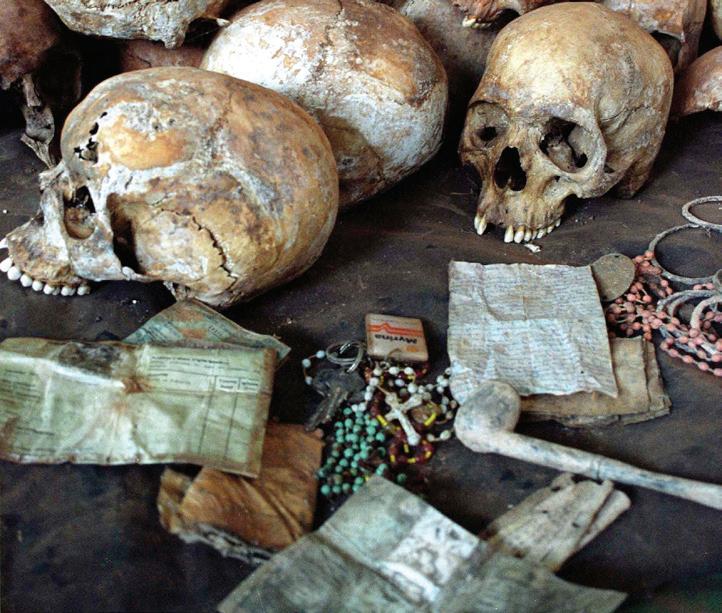
Despite the fact that they speak the same language, live side-by-side and practice the same traditions and religion, there always has been tension between the Hutu and Tutsi peoples. During the colonial period in Rwanda, the ruling Belgians favored the minority Tutsis. The Belgians divided the country further by requiring all Rwandans to carry identity cards that classified people by their ethnicity.
In 1959, a Hutu revolution, supported by the Belgians, pushed as many as 300,000 Tutsis out of the country. When Belgium granted independence to Rwanda in 1962, the country was ruled by members of the Hutu majority. The Tutsis faced discrimination and violence, and thousands fled to neighboring Burundi.
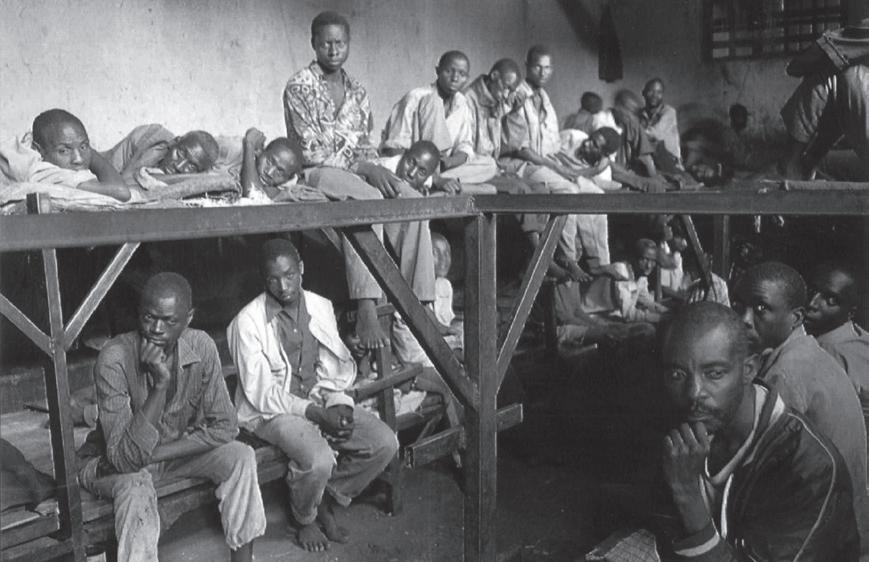
Similar to what happened in Germany after World War I, Hutu extremists blamed the Tutsi population for the country’s social, economic and political pressures. Civil war between Hutus and Tutsis broke out on October 2, 1990.
This civil war officially ended with the signing of the Arusha Accords in August 1993. “While Hutu leaders signed the agreement, its terms angered Hutu extremists, setting the stage for future violence. During this time, the extremists disseminated messages through the media telling their fellow Hutus that the Tutsis were planning a killing campaign against them,” according to the United States Holocaust Memorial Museum. Along with these false accusations, Hutu extremists dehumanized Tutsis in the media and began arming Hutu militias.
The Darfur genocide and displacements resulted in at least 200,000 deaths and 2.5 million displacements.
The United Nations Declaration on the Rights of Indigenous Peoples was signed.
ICC charged Sudan's Omar al-Bashir with crimes against humanity and genocide.
On July 9, 2011, the Republic of South Sudan was born; the north remained as the separate country of Sudan.
14 tampabay.com/nie
TIMELINE OF KEY EVENTS – crimes against humanity
2007
2011
2009
Source: United States Holocaust Memorial Museum
Source: United States Holocaust Memorial Museum
August 1994, inmates accused of war crimes sit in a prison in Kibugo, Rwanda. The 334 prisoners have been accused of participating in the genocide. Credit: AP photo.
2003-2005
Celine Uwineza
are the memories that will never go away.”
Death was waiting
After hiding behind their house in the bushes for the night, the family was able to take refuge, along with many other people, in a local convent. After a couple of days, the soldiers came and rounded up all the people.
Uwineza writes, “Everyone walked down the road in silence. We were the last group to arrive at the main road. It was there that I saw death. Death was in the form of people. Death was standing there waiting for us. There were about 50 men … wearing clothes and headdresses made of banana leaves. They were armed with blood-stained machetes and other strange looking weapons made of wood and metal. Their clothes were drenched in blood. The looks on their faces were diabolical and terrifying. Death was real.”
become numb to everything,” Uwineza says. She was happy to see her father and brother, but she describes their reunion as subdued. “I wasn’t really there,” she says.
At 6 a.m. on April 7, 1994, Celine Uwineza was “woken by alarmingly loud noises” outside her home in Kigali, Rwanda. “I thought I was dreaming and tried to go back to sleep, but the noises continued. I was frightened. It sounded like gunshots and grenades, similar to what we would hear in the movies.”
Uwineza was 10 years old, the youngest of five children.

That morning, after finding out their president's plane was shot down, Uwineza’s mother taught her children a prayer in preparation for death.
Experiencing terror
“The sensation of something hard and cold pressing against my arm woke me,” Uwineza writes in her book Untamed: Beyond Freedom. “As I opened my eyes, the chilling figure of a tall, dark-skinned soldier loomed over me. He shoved me with his gun, angrily telling me to wake up – and quickly… I was overcome with terror.”
When she went to find her family in the living room, chaos erupted. The Interahamwe soldiers threatened to kill everyone in the house, but instead shot Uwineza’s mother in the foot and took their money. The family went into hiding that night, but nothing could protect
them from the coming events.
Bits of memories
Speaking via Zoom from her home in Kigali in 2022, Uwineza remembers what her 10-year-old self saw. Her memories are in bits and pieces, “mostly in terms of video or photos.” She recalls entering the room. She remembers eating lunch and learning the prayer that her mother made the children memorize. She understood she was to say the prayer because she might die. She understood the idea of heaven because she learned about it in Sunday school but she did not understand "death."
Her memories are pictures of emotions. She recalls her mom “begging for our lives” and “seeing my siblings trying to calm my mom because the soldiers were really angry at my mom, because she was shouting and fighting them."
She remembers the soldiers shooting her mother in the foot, and “when they left, and I saw the, the wound … and it was just horrible.
Death had not come for the children, though, as they were sent back to the convent with the nuns. Everyone else was at the mercy of the soldiers, armed with machetes and guns.
The fear of separation
The most overwhelming feeling Uwineza recalls when she thinks back is that she was more scared of the unknown part of living without her family than she was of dying. “I didn't know what death or dying meant, but I knew that she [her mother] said, ‘but don't worry, we'll be together, and we'll be going to heaven.’ So being together with the family again and going to heaven were my safe place.”
As one of the oldest children in the orphanage, she helped take care of the younger children. Every day, the soldiers came back in their bloodstained clothing threatening to kill everyone.
Eventually, when the genocide ended, the Rwandan Patriotic Front (RPF) was able to move the children to a refugee camp. It was there she learned her father and one of her brothers were alive. “I had


Going back home
Uwineza says it took a little while for things to go back to normal once she, her father and brother returned to Kigali. The first noticeable changes were that school reopened after a few months and the government banished ethnic identification cards. Although it took a while for the mourning and healing, there was a new “atmosphere of security,” Uwineza says. “We were not being discriminated against, not being persecuted all the time.”
“The aftermath was challenging.” Some people who committed genocide were captured and put in jail, which brought a sense of security and justice. She thought they could actually start over, “pick up pieces here and there and move forward."
The healing process
Uwineza believes the healing process will continue for generations. She says, “Rwanda has changed for good.”
She believes genocides can be prevented but it has to start with the policymakers and with personal and family beliefs and values. “I will say that it's both the old generation, but also the young generations' responsibility to find a common ground to work towards making sure that the issues are tackled together.”
"Those
EYEWITNESS:
Celine Uwineza’s father Wilberforce, mother Norah, brothers Johnny and Claude, sisters Claudette and Francine then Celine, taken 10 years before the genocide. Credit: Celine Uwineza
This is Celine a few weeks before the genocide. Credit: Celine Uwineza
tampabay.com/nie 15
This is Celine today. Credit: Celine Uwineza
With only a few meager possessions, villagers from Tarny in northern Darfur seek safety following an attack by soldiers from a rival rebel group. Fighting among rival rebel groups is escalating in Darfur, threatening a two-month-old peace agreement and prolonging a war that has already killed some 200,000 people. Credit: Shashank Bengali/MCT
Genocide in Darfur

Sudan: A country divided

Since the 1950s, the Arab-dominated government of Sudan, Africa, has been centered in the capital Khartoum. Brutal violence between the north and south permeated the country between 1955 and 2005, and continues to this day. “The result has been a deadly mix of ethnic, religious and politically motivated conflicts,” according to the United States Holocaust Memorial Museum.
While the number of civilian deaths has never officially been determined, more than 2.5 million people have been killed or have died of conflict-related starvation and disease.
Following widespread protests, former President Omar al-Bashir was removed from office in 2019. He was replaced by a “civilian-military transitional government. Despite the transfer of power, civilians in the western region of Darfur and the states bordering South Sudan remain at risk.”
Genocide is like a dessert. It is made of the flesh and bones of woman and children, it is sweetened with the blood of the innocent, and it is baked in the ovens of Auschwitz. There were truths to be learnt and there was wisdom to be gained... but there was a price to be paid as well. You could not brush up against the future and escape unscathed. You could not see into the forbidden and avoid damage to your sight.”
Terry Brooks, author
The Sundanese government under General Omar al-Bashir wished to create a more Islamic-based government that was opposed by southern groups and led to civil war. Darfur is a region in southern Sudan, home to a population of around 6 million people, mostly non-Islamic, from nearly 100 different tribes. In Darfur, the primary victims were the Fur, Zaghawa and Masalit ethnic groups.
The Sudanese government established a pattern of attacks against civilians, killing, torturing, raping and displacing millions. Assault tactics included:
• Mass starvation and forcible displacement
• Blocking humanitarian aid
• Harassment of internally displaced persons
• Bombing of hospitals, clinics, schools and other civilian sites
• Use of rape as a weapon against targeted groups
• Employing a divide-to-destroy strategy to pit ethnic groups against each other, causing enormous loss of civilian life
TIMELINE OF KEY EVENTS – crimes against humanity
Massacres are ongoing in South Sudan.
During the genocide of the Islamic State against the Yazidi people in Iraq, more than 5,000 people were killed and more than 400,000 people were displaced from their homes.
• Training and support for ethnic militias who commit atrocities
• Destruction of indigenous cultures
• Enslavement of women and children by government-supported militias
• Impeding and failing to fully implement peace agreements.
Sources:
16 tampabay.com/nie
United States Holocaust Memorial Museum; The Holocaust Museum Houston; Holocaust Memorial Day Trust
Source: United States Holocaust Memorial Museum
–
2014
Zenaba Ismail cradles her daughter, left, and the daughter of her sister, who was killed by gunmen, July 6, 2004, in the Koumouangou refugee camp in Chad near the Sudan border. Credit: AP photo/Karel Prinsloo.
2013-present
Violence and displacement
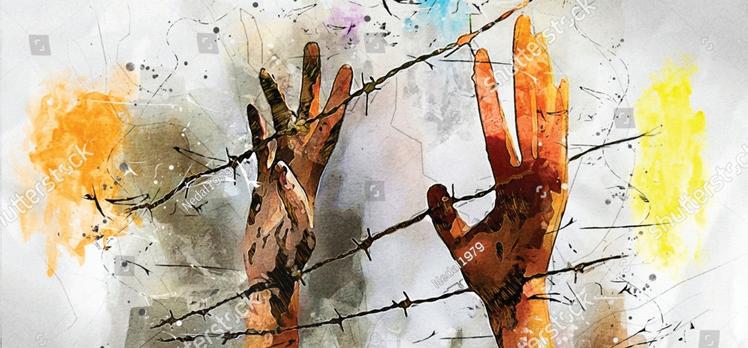
During the 1990s and early 2000s, the western region of Darfur experienced violent internal disputes over access to land and power, according to the United States Holocaust Memorial Museum. As a result, the Sudanese government responded by “rewarding and arming local militias, known as Janjaweed, who shared its beliefs."
In 2003, members of the Fur, Zaghawa and Masalit ethnic groups created the Sudan Liberation Army (SLA) and attacked a government airfield on April 25, 2003. A second rebel group, the Justice and Equality Movement (JEM), joined the fight against the Sudanese government forces.
“Between 2003 and 2005, Sudanese government forces and their allied militias conducted a series of raids against Fur, Zaghawa, and Masalit villages.” Civilians were targeted because of their ethnic and religious identity in what is now referred to as the Darfur genocide.
During this period, at least 200,000 people died because of the war, and more than 2 million were displaced internally or fled as refugees to neighboring Chad.
While many villagers were killed, tortured and raped during the attacks, the greatest civilian death tolls came during the forced flight out of Darfur. “Pushed into the desert without water, food or medical supplies, many civilians perished due to malnutrition and disease.” The government blocked delivery of humanitarian aid to these people.

Think about it
What actor Don Cheadle and activist John Prendergast learned and wrote about in their book Not on Our Watch: The Mission to End Genocide in Darfur and Beyond is “that there are three pillars to fostering a real change in human rights and conflict resolution policy: field research to learn what is really happening in the conflict zones and what needs to be done, high-level advocacy to deliver the message to the people who determine policy, and domestic political pressure from a constituency that cares about these issues and takes them up with their elected officials. This last one often goes missing. Sustained and robust campaigns by organized citizens are needed for maximum impact.”
Going beyond the text
Taking action
When learning about genocide, individuals may feel helpless. The magnitude of the event and seeming inactivity of the world community and its policymakers can be intimidating, but actions of any size have potential impact. Numerous incidents from the Holocaust and other genocides illustrate this point. Appalled and energized by the genocide in Darfur, Sudan, actor Don Cheadle teamed up with activist John Prendergast to focus the world's attention on the crisis. Their first book, Not on Our Watch: The Mission to End Genocide in Darfur and Beyond, offers six strategies people can use to shape political change:
• Raise awareness – Stay informed and inform others about the atrocities and issue, subscribe to the latest news, write an op-ed or letter to the editor of your local newspaper, write to television networks and encourage them to cover information about the atrocity.
• Raise funds – Host an event or concert, set up donation boxes, join forces with others to widen your appeal.
• Write a letter – Write to elected officials and urge them to take action to stop atrocities in places like Darfur. Personal letters stand the best chance of being noticed.
• Call for divestment – Research companies and organizations that support places committing genocide and request they divest assets from those countries or organizations.
• Start or join an existing organization – The best way to stay up to speed on news, events and opportunities is to get involved in stopping genocide. Check out the Standnow.org website.
• Lobby the government – Find out your representatives' records on the genocide. Attend public events and ask questions, meet with elected officials. Each of these small actions can make a huge difference in the fate of a nation and people. With a partner or in a small group, choose one of the above actions. Create a plan that focuses on one of the methods. Next, monitor the Tampa Bay Times for a month and find news articles that focus on an international event that needs to be addressed to help people at risk of losing their rights. Discuss your plan and what you have learned with your class.
tampabay.com/nie 17
Source: United States Holocaust Memorial Museum
2017-present
Rohingya massacres and ethnic cleansing in Myanmar.
2017-present
Uyghur ethnic cleansing and forced displacement in China.
Displaced children from Darfur living in a refugee camp outside of Rumbek, Sudan (now South Sudan). Credit: Chris Ingram.
EYEWITNESS: Carl Wilkens
In the spring of 1990, humanitarian worker Carl Wilkens moved his wife and three young children to Rwanda. He recalls the countryside being beautiful and the people friendly. He and his family lived with two Rwandans who quickly became part of the family. The children were happy and the family was safe.
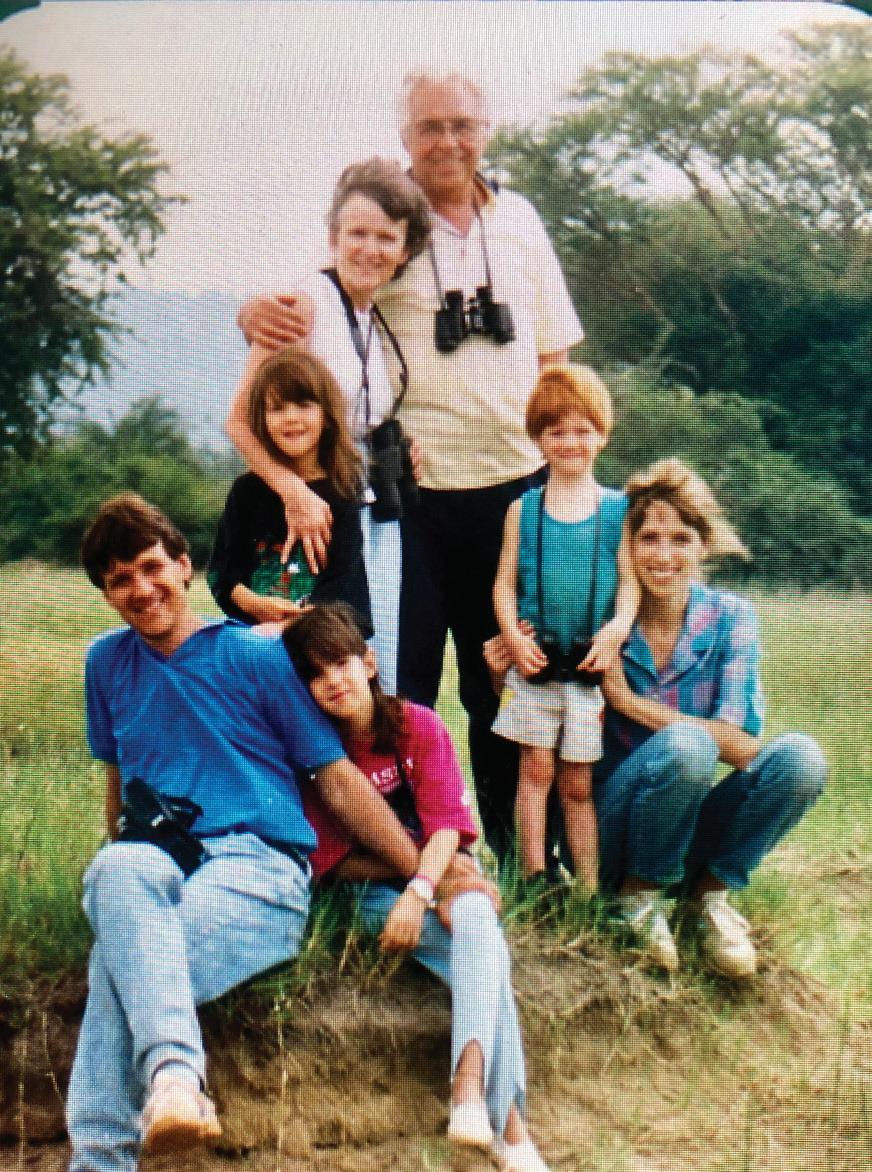
All of that changed in April 1994 when the plane carrying Rwandan president Juvenal Habyarimana was shot down over the country.
Urged to leave the country by friends, the United States government and his church, Wilkens decided to stay to protect the lives of the people in his home. Thousands of expatriates, including Wilkens’ wife and children, evacuated. The United Nations pulled out most of its troops. Wilkens was the only American to remain in the country.
The decision to stay
“If I could stay, perhaps my presence could help keep these people alive," Wilkens says from his home. "There was a huge respect for foreigners.” What he thought would be a couple of weeks of turmoil turned out to be 100 days of fighting for survival.
“The plane was shot down Wednesday night, April 6, and Thursday night, April 7, a gang came to our gate with the intent, our neighbors told us, of killing us,” Wilkens recalls.
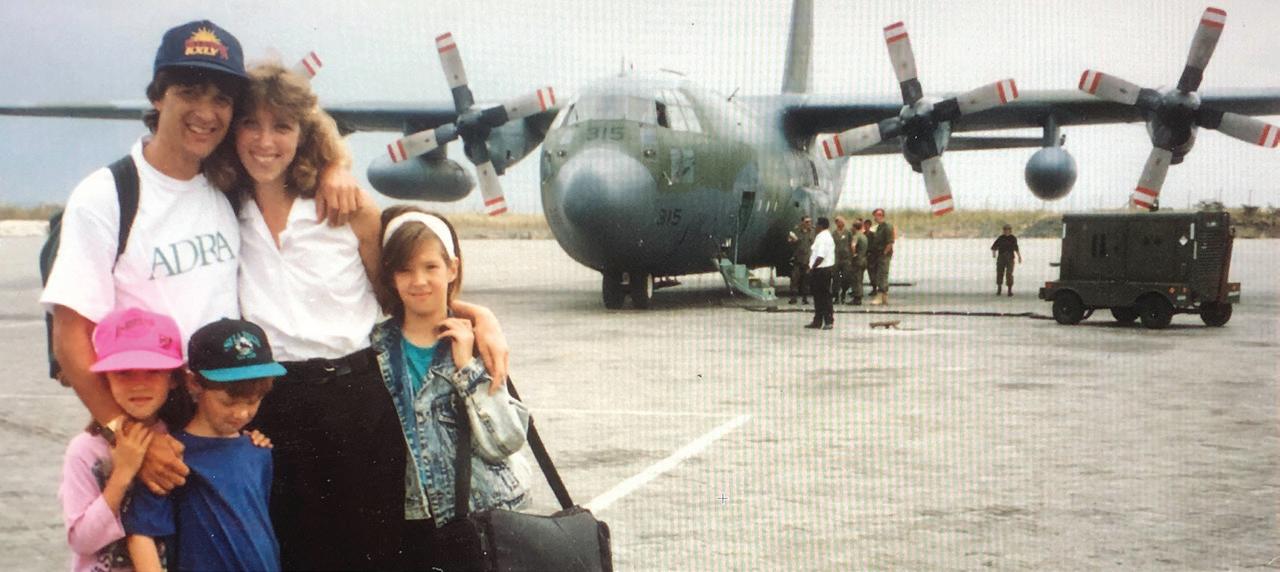
“We didn't even know they were at the gate because neighbor ladies came to the gate and got
between this gang and our gate and said, ‘no, no, no, you can't go in there.’ They started telling little stories, little acts of kindness that our family had done over the four years we've been living there. And then they kind of summed it up by saying, ‘you can't go in there. Their kids play with our kids.’
“I look at that story, and I think about the courage of those ladies, I think, you know, what those ladies were doing, they were telling stories and in telling stories, they were pulling the guys out of the fight or flight part of their brain."
Wilkens explains that getting people who are angry and afraid out of the fight or flight mindset can be imperative. “We don't just study the Holocaust and genocide,
because we need to know how horrible and how brutal we can be. We have got to study this to understand how we can live peacefully” and to recognize how to bring change.
Wilkens ventured out each day into “streets crackling with mortars and gunfire. He worked his way through roadblocks of angry, bloodstained soldiers and civilians armed with machetes and assault rifles in order to bring food, water and medicine to groups of orphans trapped around the city. Working with Rwandan colleagues, they helped save the lives of hundreds,” according to Wilkens’ website A World Outside my Shoes, worldoutsidemyshoes.org.
TIMELINE OF KEY EVENTS – crimes against humanity
Almost 2,000 people in Tigray, Ethiopia, were massacred.
Under the direction of Vladimir Putin, Russia invaded Ukraine. Since February 2022, more than 1 million Ukrainians have been forcibly deported and allegedly subjected to a wide range of human rights abuses including torture and mass killings.

18 tampabay.com/nie
2020-present
2022 - present
Defined by diplomat Samantha Power, an upstander is a person who has chosen to make a difference in the world by creating positive change and speaking out against injustice.
The world will not be destroyed by those who do evil, but by those who watch them without doing anything."
– Albert Einstein
Top left and above: Carl Wilkens and his family in Rwanda before the genocide. Photos courtesy of Carl Wilkens
Survival mode
“During the genocide, you're just trying to survive,” Wilkens notes. He had to make splitsecond decisions about trusting other people. In his book, I’m Not Leaving, Wilkens recalls people helping him who he later found out were also killing people. He had to rely on the people in power to assist him and the orphans he was helping. “On practical purposes, I started to interact with people, and I would see acts of kindness and acts of brutality and inhumanity.”
Wilkens says, “It’s one thing to say we're capable of good and we're capable of harm. It's another thing to live and see it in real time. And so it was only after the genocide that I really started trying to process that idea. You know, how is it that some people could be hiding somebody at home at great risk to their family and yet be going out and brutally killing and raping people.”
He notes, “We have this belief in this fallacy that there's good guys and bad guys, right? It's a framework that works really well for so much of our life. You know, in a movie we're trying to figure out there's a good guy, bad guy in a situation. … That really blinds me to the potential for good in everybody. And that really blinds me to one of my biggest barriers to a healing mindset.”
Wilkens says he didn’t know who to trust and who not to trust. “Most of the time, my decision to trust in crisis is very different than decision of trust in normal times. Decisions to trust in crisis are so desperately driven."
In one example, Wilkens and his friends were surrounded by soldiers when they were at the orphanage. There were 50 armed men wanting to massacre everyone at the orphanage. When a handful of police officers showed up, Wilkens decided to trust the lieutenant in charge.
“I thought to myself later, maybe that guy didn't come to protect. Maybe he came to harm, but when I demonstrated trust … nobody is
Think about it
a hundred percent good, a hundred percent bad. We all come into situations like this, scary situations, and we're conflicted.”
Prevention
Wilkens believes the genocide in Rwanda could have been prevented. “You know, I think a lot of people in Rwanda who didn't stay during the genocide could have stayed and made a difference,” Wilkens says. He says it is important to train people that they can make a difference, but it needs to start in childhood.
“Imagine if all through our school life, we have had the habit and opportunity of not only solving problems … but of respect, empathy and inclusion, understanding that there's models called power over and models called power with, and unfortunately much of our education and the rest of the world is power over as opposed to the growth that comes the unlimited resources available when we go with the mentality of power with.” He says it is important to prioritize healing over punishment, community over productivity, and relationships over content.
“Those are really tough things to do in the pressure-filled world,” Wilkens says.
One reason that genocide occurs is the complicity of bystanders within the nation and around the world. However, in each genocide, there have been individuals — both persons at risk inside the country as well as external observers or stakeholders — who have spoken out against the oppressive regime and/or rescued threatened people. There are always a few who stand up to face evil with tremendous acts of courage — and sometimes very small acts of courage, of no less importance.
Timeline sources: The Atlantic Council, Colorado Department of Education; Encyclopaedia Britannica; History.com; Human Rights Watch; JSTOR; Library of Congress; British Broadcasting Company; Military History; Smithsonian Magazine; United Kingdom Encyclopedia; United States Holocaust Memorial Museum; Washington Post
The enough moment
At the center of their book The Enough Moment, Don Cheadle and John Prendergast wrote about the principal role upstanders play in bringing about positive change.
Cheadle and Prendergast wrote, “[I]f war criminals everywhere face an ocean of people with Braveheart-like commitment standing up in support of peace and human rights, the odds improve that the world will be a better and safer place for millions of people…. We as caring citizens need to catalyze and build an even bigger and stronger people’s movement for change. We need to assemble an unusual coalition and force better policies through popular demand. The political will for real change will come from the bottom up. This is our chance.”
The Enough Project, founded in 2007, was a response to a lack of organized public citizenry responding to deadly conflicts and mass atrocities in East and Central Africa. Gayle Smith and John Prendergast created the Enough Project, which supports peace and an end to mass atrocities in Africa’s deadliest conflict zones.
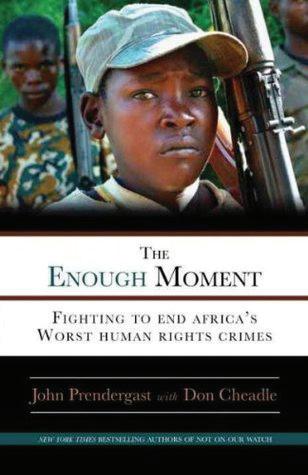
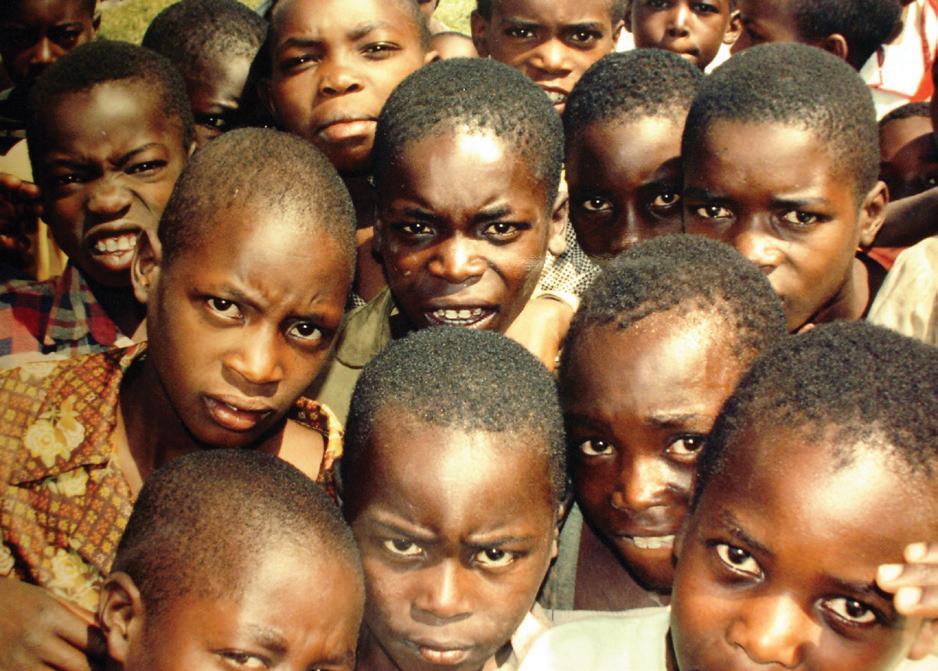
Cheadle and Prendergast wrote, “Understanding that there are answers is empowering. Demonstrating that the answers usually involve partnerships between Frontline Upstanders in the war zones and Citizen Upstanders around the world is crucial to showing that there is a connection between the activism of ordinary citizens and the ending of wars and massive human rights crimes.”
Going beyond the text
The enough moment
“Throughout our lives, we will constantly have choices and opportunities to either become Upstanders or bystanders. If enough of us choose to be Upstanders, we can help change the course of history. That is the Enough Moment. Enough of us, with enough commitment, will lead the change,” write actor/ activist Don Cheadle and Enough Founding director John Prendergast, in The Enough Moment: Fighting to End Africa’s Worst Human Rights Crimes. Look through the Tampa Bay Times for examples of upstanders. In your journal, define an upstander in your own words. Then explain how the person in the article fits the definition. Share your ideas with your class.
tampabay.com/nie 19
Source: The Enough Project
School children before the Genocide in Rwanda, 1993. Credit: Carl Wilkens
About Florida Humanities
Funding for this program was provided through a grant from Florida Humanities with funds from the National Endowment for the Humanities. Any views, findings, conclusions or recommendations expressed in this publication do not necessarily represent those of Florida Humanities or the National Endowment for the Humanities.
On September 29, 1965, President Lyndon Johnson signed the National Foundation on the Arts and the Humanities Act into law. This law created the National Endowment for the Arts and the National Endowment for the Humanities (NEH). The purpose of the NEH is to advance the humanities and its respective disciplines into the public square.
The NEH soon realized the immense challenge of its mission. To respond more effectively to local needs, the NEH decided to establish a humanities council in every state, plus six U.S. territories. The Florida Humanities was established in 1973.
Since the organization’s founding, Florida Humanities has been dedicated to advancing NEH’s core mission in the state of Florida. To accomplish that mission — to provide humanities access to all Floridians, wherever located — they emphasize partnership opportunities with organizations and locations with limited access to the humanities. Learn more at floridahumanities.org
Resources
Dimensions in Testimony thefhm.org/exhibits/ dimensions-in-testimony
Facing History and Ourselves facinghistory.org
Holocaust Center for Humanity holocaustcenterseattle.org
International Criminal Court icc-cpi.int
iWitness iwitness.usc.edu
Learning for Justice learningforjustice.org
The Enough Project enoughproject.org
The Florida Holocaust Museum thefhm.org
The Holocaust Memorial Day Trust hmd.org.uk United Nations un.org
United States Holocaust Memorial Museum ushmm.org
United States Holocaust Memorial Museum Glossary of Terms encyclopedia.ushmm.org/ content/en/article/glossary
World Outside My Shoes worldoutsidemyshoes.org
Yad Vashem yadvashem.org
Newspaper in Education
The Tampa Bay Times Newspaper in Education program (NIE) is a cooperative effort between schools and the Times Publishing Co. to encourage the use of newspapers in print and electronic form as educational resources – a living textbook.
Our educational resources fall into the category of informational text, a type of nonfiction text. The primary purpose of informational text is to convey information about the natural or social world. NIE serves educators, students and families by providing schools with class sets of the Pulitzer Prizewinning Tampa Bay Times plus award-winning original educational publications, teacher guides, lesson plans, educator workshops and many more resources — all at no cost to schools, teachers or families.
In 2020-2021, NIE provided more than 1 million print copies and 10 million digital editions of the Times to area classrooms. For more information about NIE, visit tampabay. com/nie, call 727-893-8138 or email ordernie@ tampabay.com. Follow us on Twitter at twitter. com/TBTimesNIE. Find us on Facebook at facebook.com/TBTNIE.
NIE is a member of Florida Press Educational Services (FPES), a 501(c)(3) nonprofit organization of Florida newspaper professionals whose mission is to promote reading and critical thinking, particularly for young people. FPES was founded in 1980 as Florida Newspaper in Education Coordinators.
NIE Staff
Jodi Pushkin, manager, jpushkin@tampabay.com Sue Bedry, development officer, sbedry@tampabay.com
© Tampa Bay Times 2023
Credits
Written by Jodi Pushkin, Times staff
Designed by Stacy Rector, Fluid Graphic Design
Consulting scholars: Dr. Edward Kissi, associate professor at the School of Interdisciplinary Global Studies at University of South Florida
Ursula Szczepinska, director of Education & Research, The Florida Holocaust Museum Special thanks to Maja Kazazic, Toni Rinde, Sophal Leng Stagg, Celine Uwineza, Carl Wilkens and Charlene and Mary Wygodski
Timeline sources: Colorado Department of Education; Encyclopedia Britannica; History. com Editors; Human Rights Watch; JSTOR; Library of Congress; British Broadcasting Company; Military History; Smithsonian Magazine; United Kingdom Encyclopedia; United States Holocaust Memorial Museum
Florida Standards
This publication and its activities incorporate the following Florida Standards for middle and high school students.
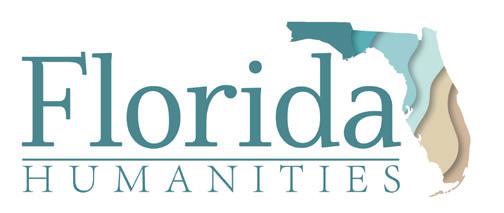
Social Studies: SS.912.C.4.1; SS.912.CG.3.1; SS.912.CG.4.4; SS.912.H.1.2; SS.912.H.1.3; SS.912.HE.1.1; SS.912.HE.1.2; SS.912. HE.1.4; SS.912.HE.1.5; SS.912.HE.2.1; SS.912.HE.2.5 SS.912.HE.2.6; SS.912. HE.2.7; SS.912.HE.2.9; SS.912.HE.2.10; SS.912.HE.2.11; SS.912.HE.2.13; SS.912. HE.2.14; SS.912.HE.2.15; SS.912.HE.3.4; SS.912.HE.3.5; SS.912.S.1.4; SS.912.S.1.7; SS.912.S.1.8; SS.912.S.2.3; SS.912.S.2.9; SS.912.S.3.1; SS.912.S.3.2; SS.912.S.3.3; SS.912.S.4.; SS.912.S.4.5; SS.912.S.5.2; SS.912.S.5.5; SS.912.S.5.9; SS.912.S.7.1; SS.912.S.7.5; SS.912.S.8.2; SS.912.S.8.3; SS.912.S.8.7; SS.912.S.8.9; SS.912.W.1.1; SS.912.W.1.3; SS.912.W.1.5; SS.912.W.1.6; SS.912.W.7.5; SS.912.W.7.6; SS.912.W.7.8; SS.912.W.9.3; SS.912.W.9.4; SS.912.W.9.5
BEST: ELA.912.C.1.2; ELA.912.C.1.3; ELA.912.C.1.4; ELA.912.C.1.5; ELA.912.C.2.1; ELA.912.C.3.1; ELA.912.C.4.1; ELA.912.R.2.1; ELA.912.R.2.2; ELA.912.R.3.1; ELA.912..R.3.2; ELA.912.R.3.4; ELA.912.V.1.1; ELA.912.V.1.3
Florida’s
Legislature/ Department of Education Required Instruction
1003.42(f)
In 1994, the Florida Legislature passed the Holocaust Education Bill (SB 660), which amended Section 233.061 of the Florida Statutes (Chapter 94-14, Laws of Florida), relating to required instruction. House Bill 1213 from 2020 enhanced this mandate. The law requires all school districts to incorporate lessons on the Holocaust as part of public school instruction.
The history of the Holocaust (1933-1945), the systematic planned annihilation of European Jews and other groups by Nazi Germany, a watershed event in the history of humanity, to be taught in a manner that leads to an investigation of human behavior, an understanding of the ramifications of prejudice, racism, and stereotyping, and an examination of what it means to be a responsible and respectful person, for the purposes of encouraging tolerance of diversity in a pluralistic society and for nurturing and protecting democratic values and institutions.
Teach with the Times and win
Educators, share 100 words about how you used this resource in your classroom for a chance to win a $15 gift card! Visit tampabay.com/nie and click on Resources, Information for Teachers for more information and to enter.
20 tampabay.com/nie




















































